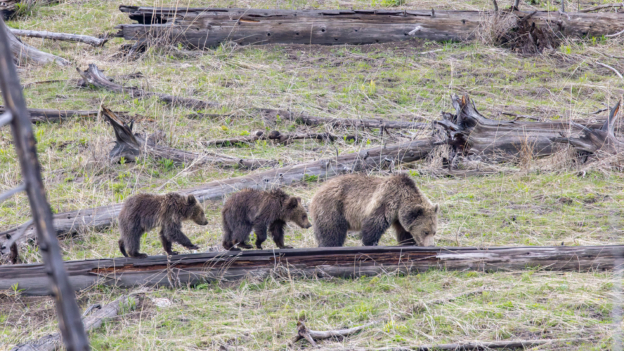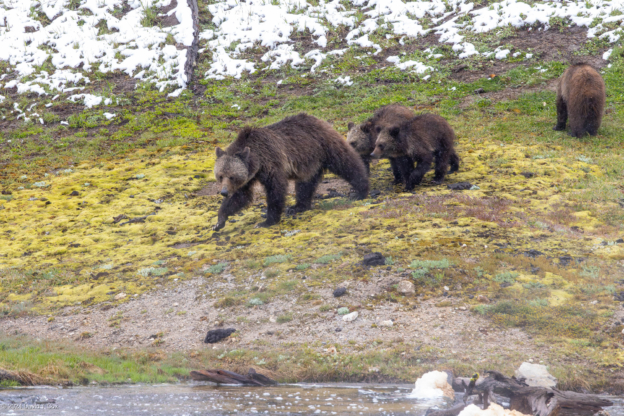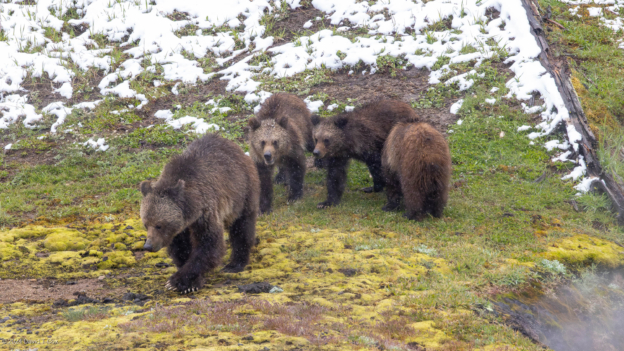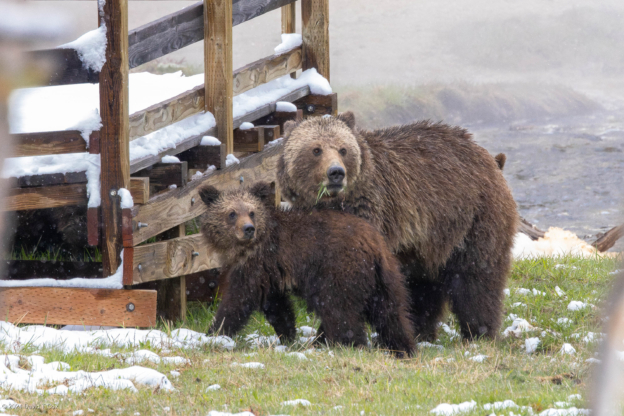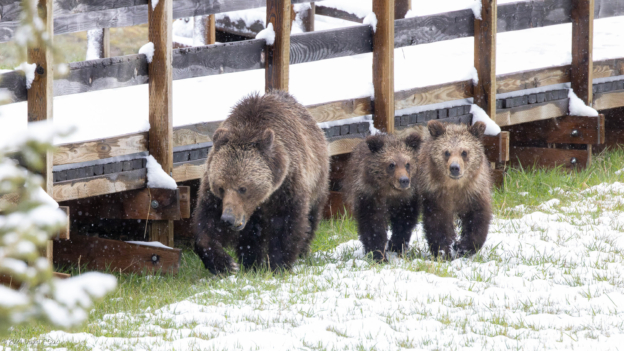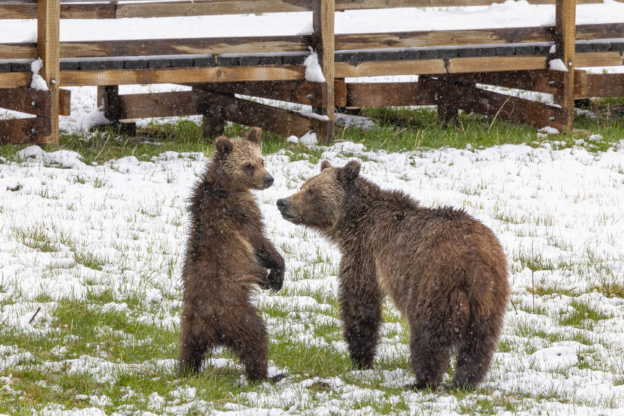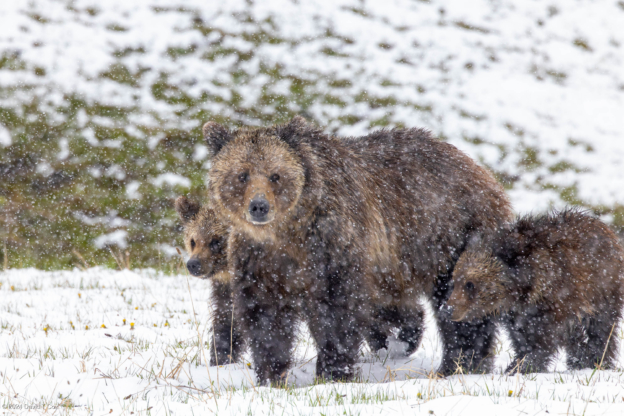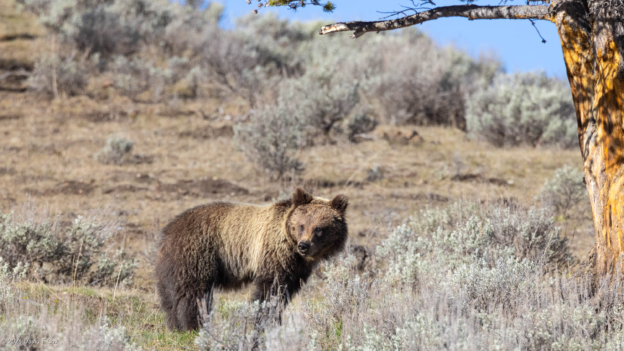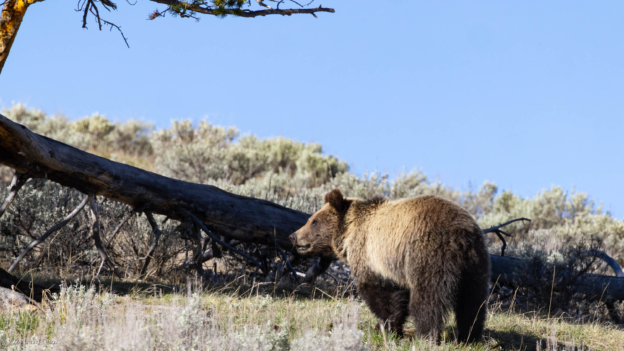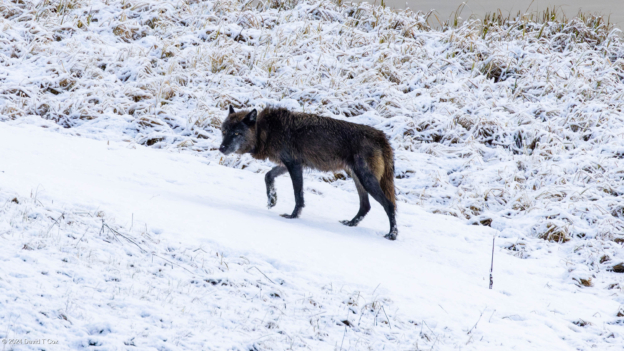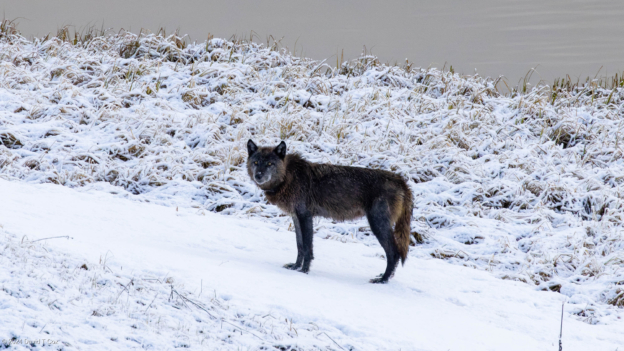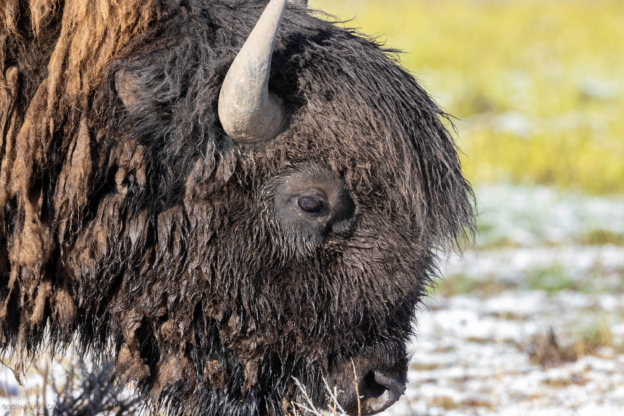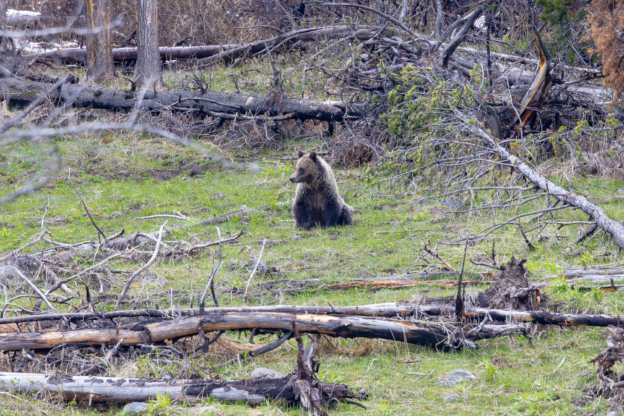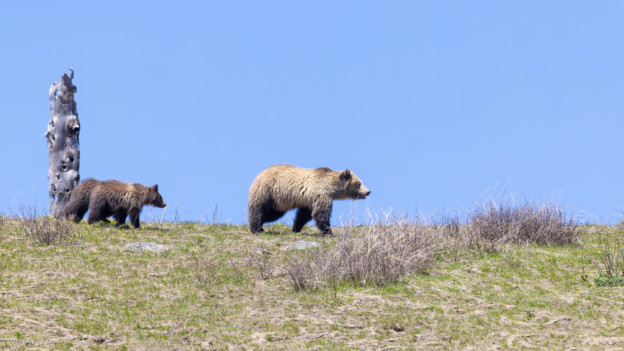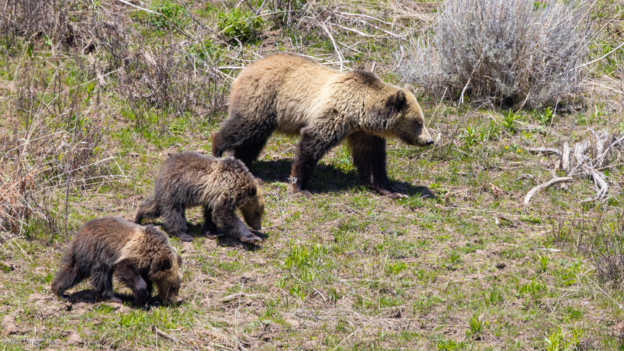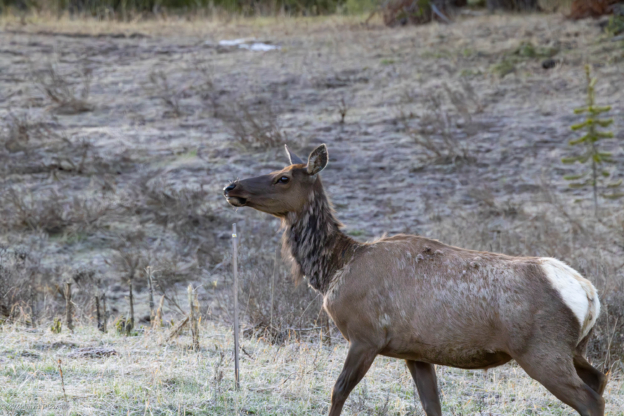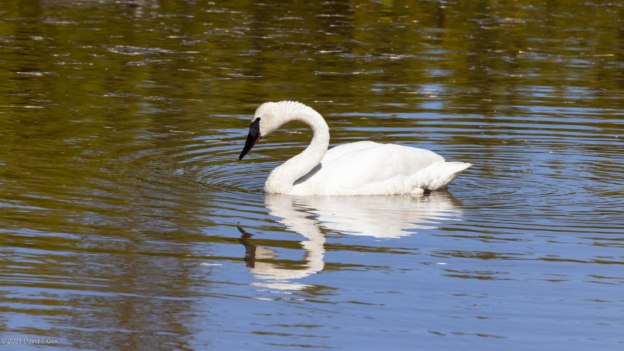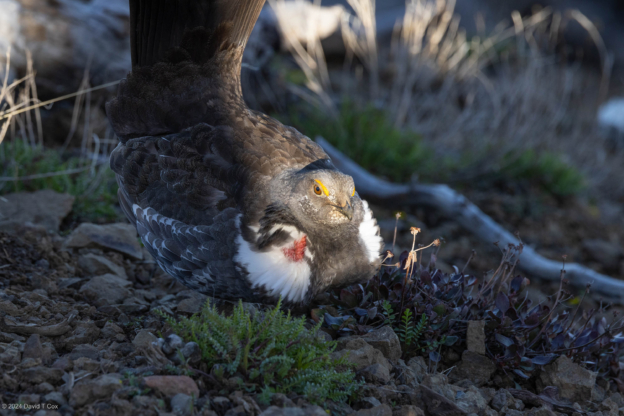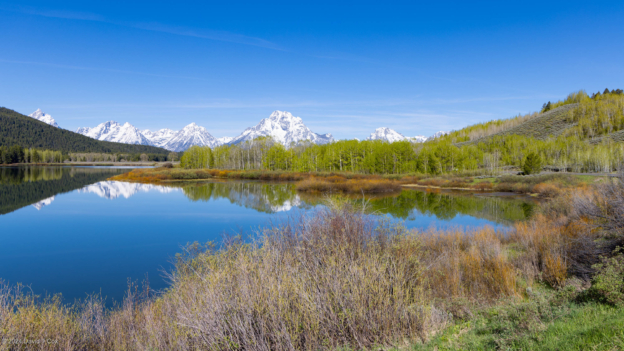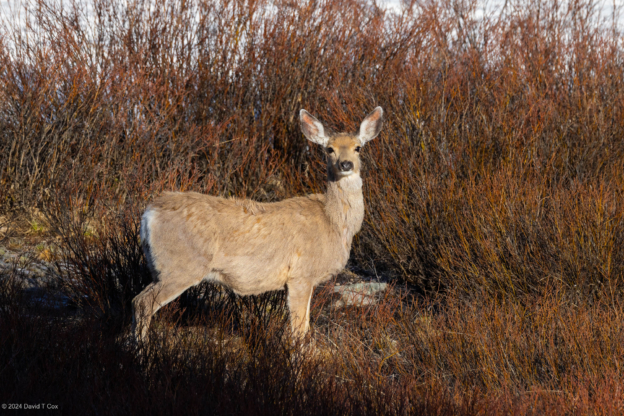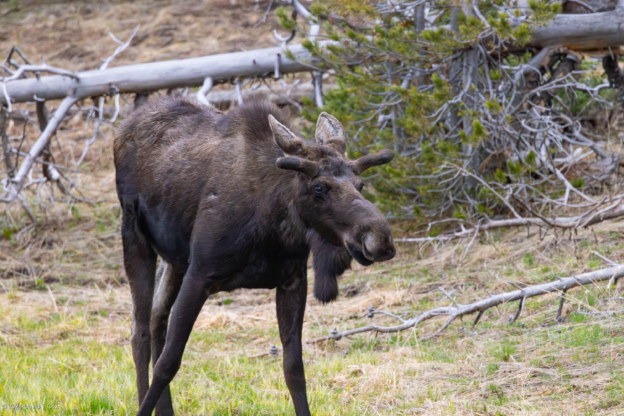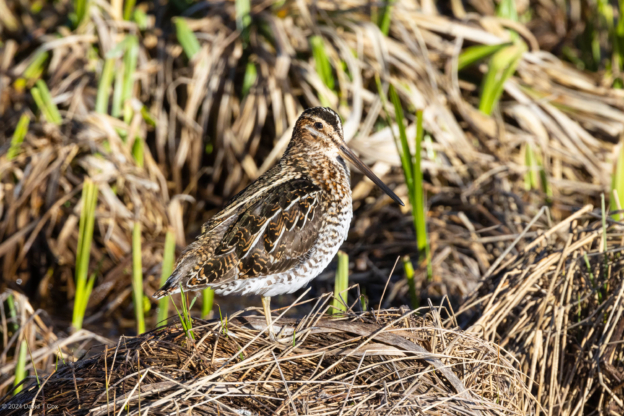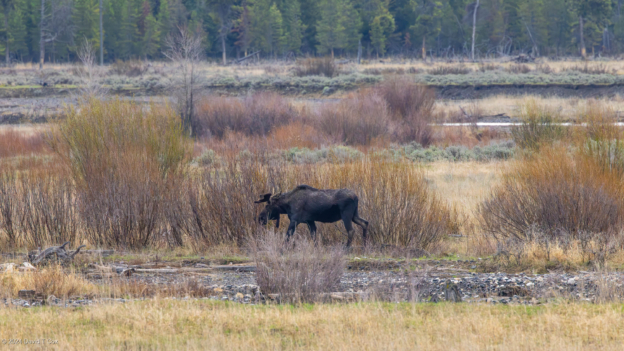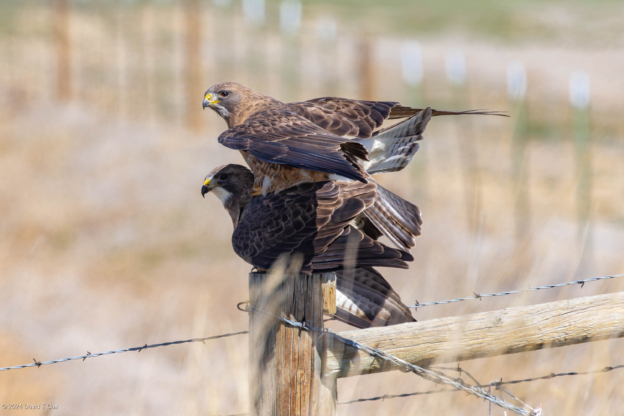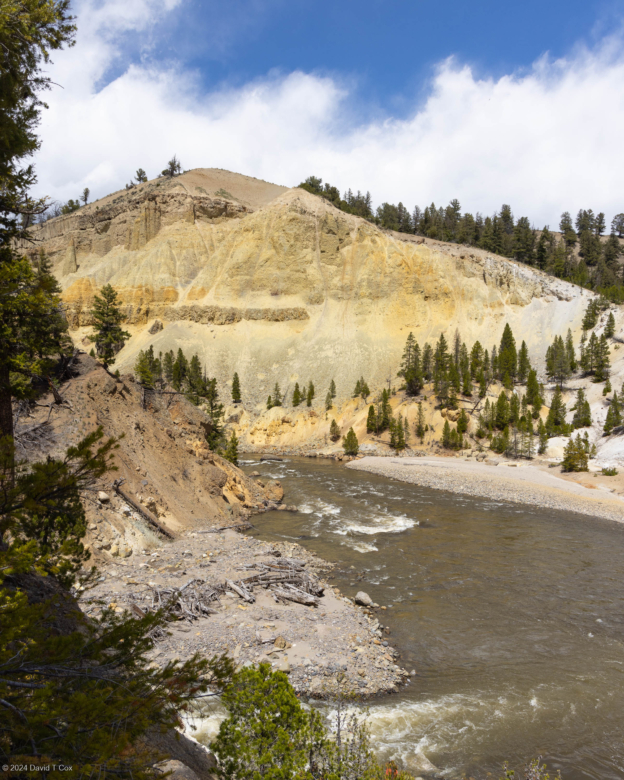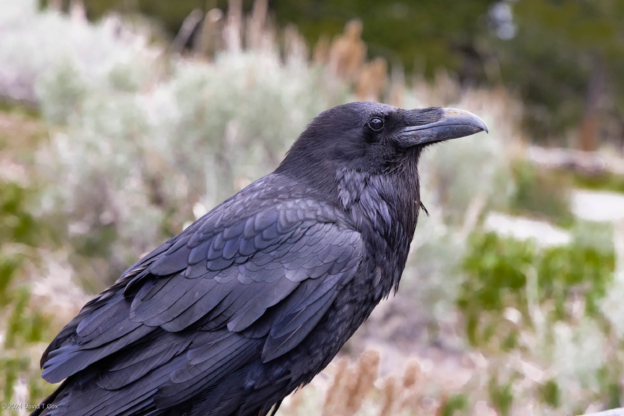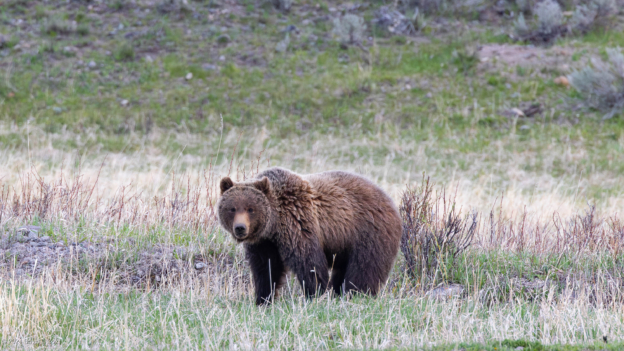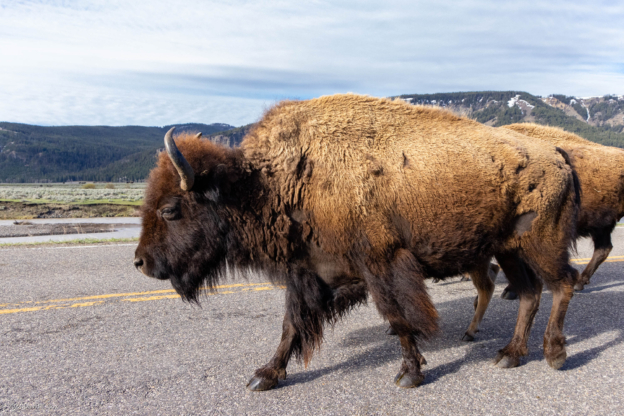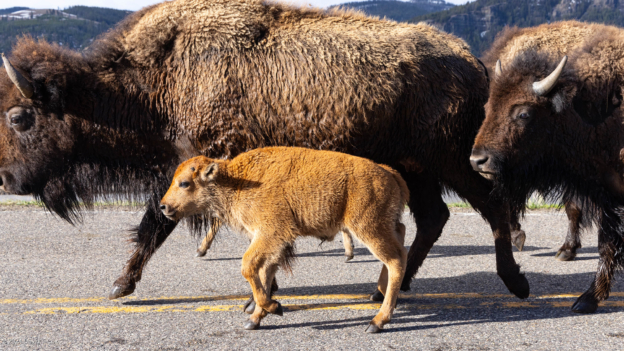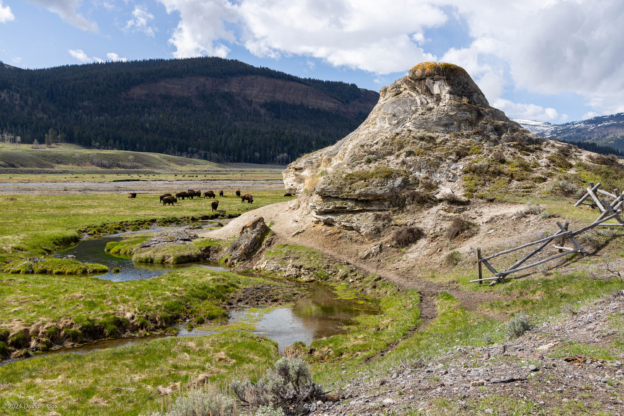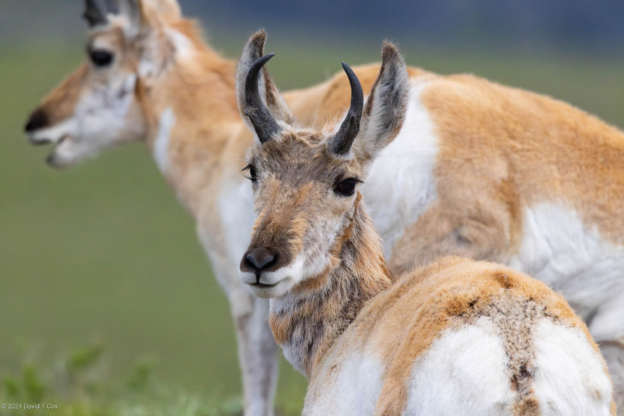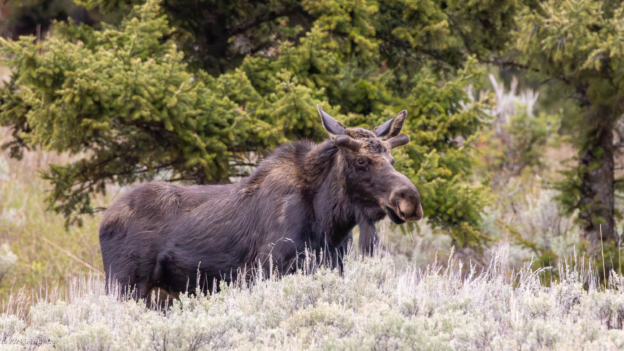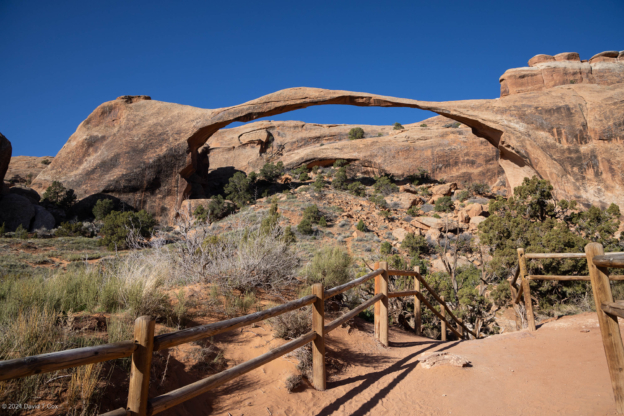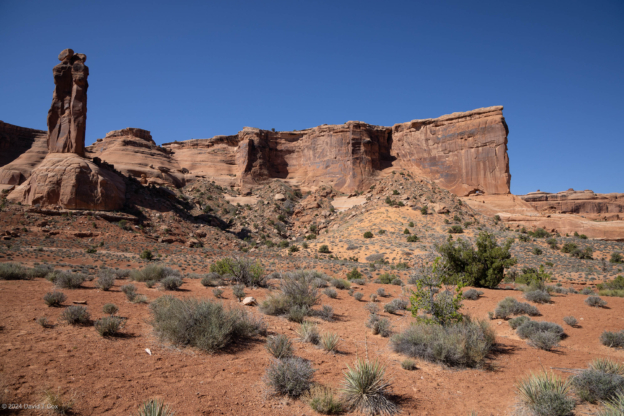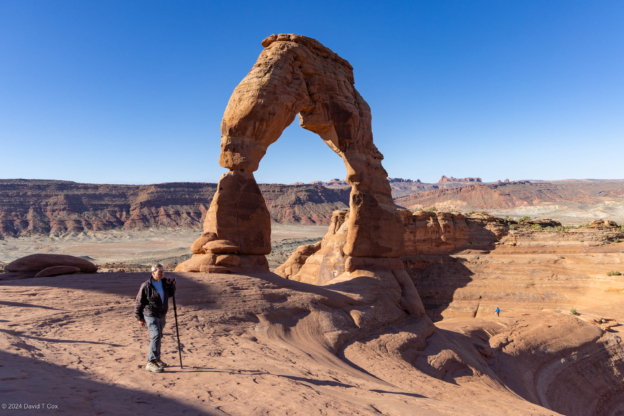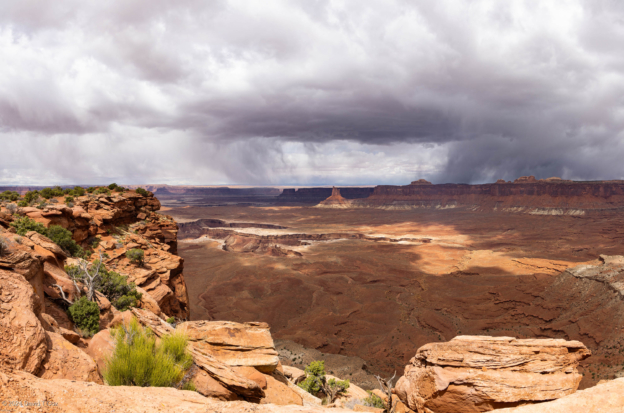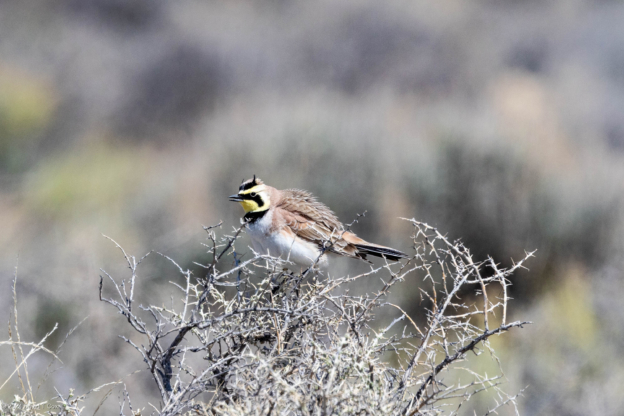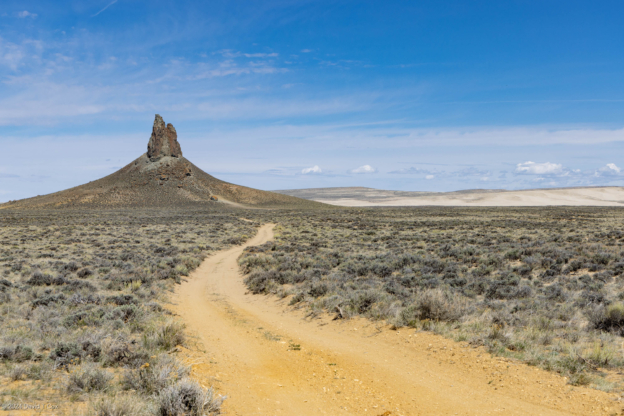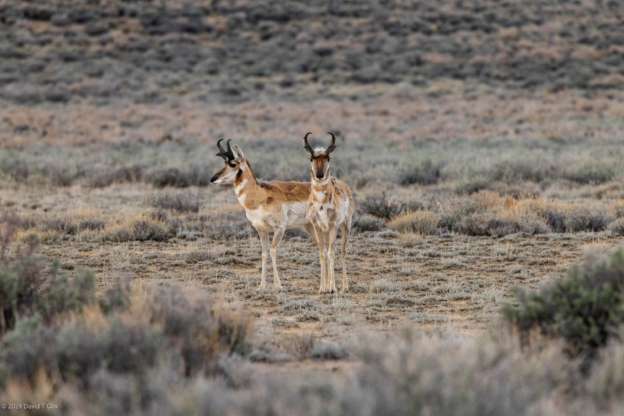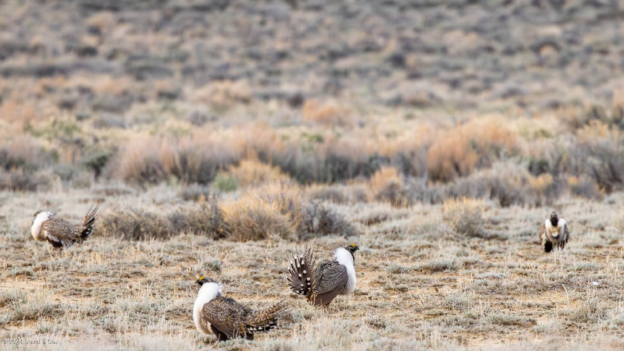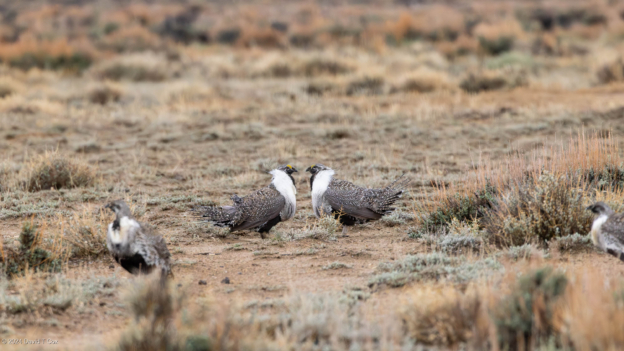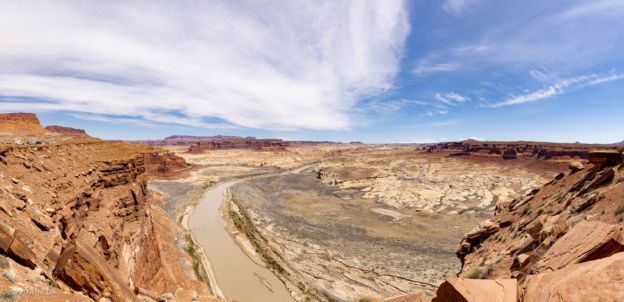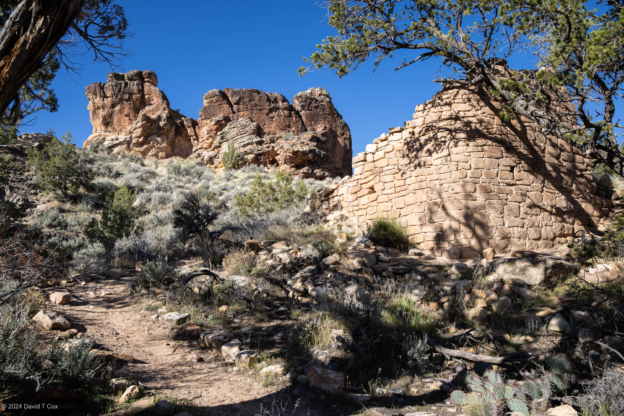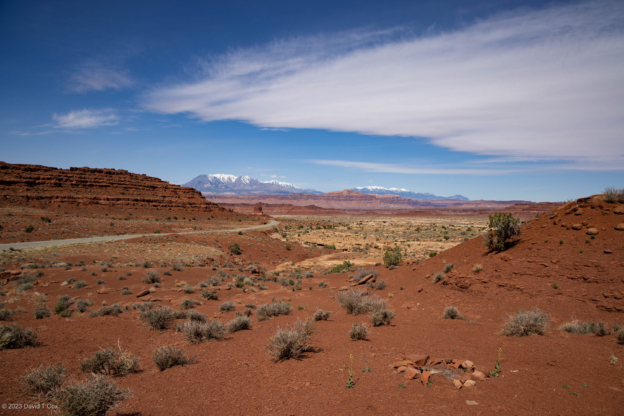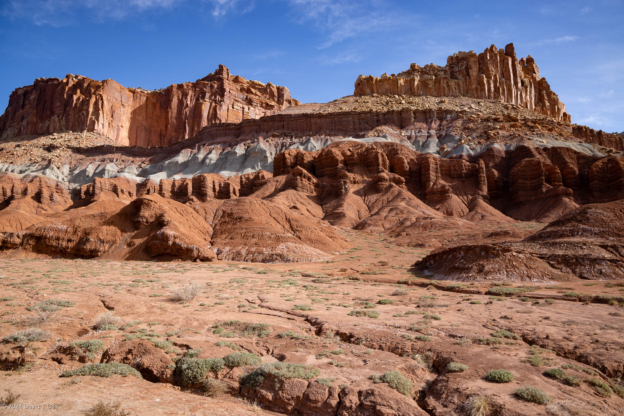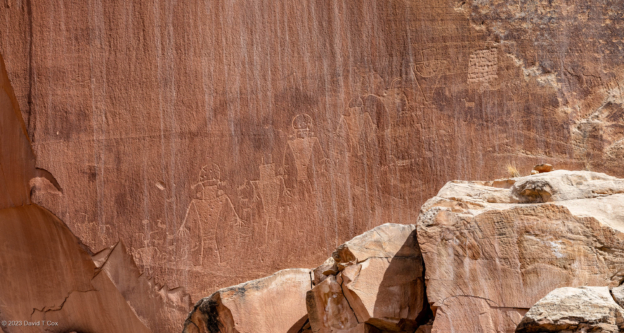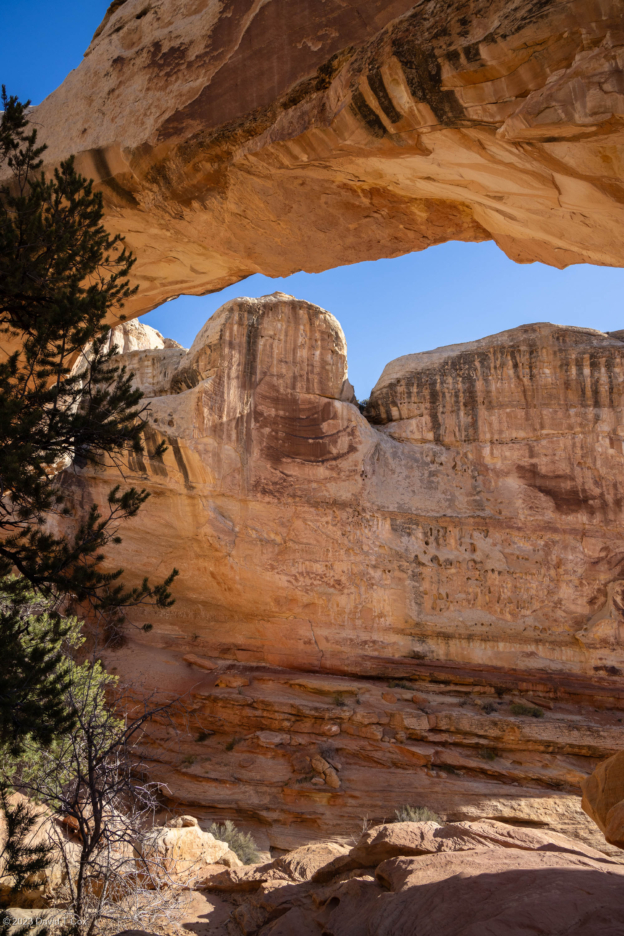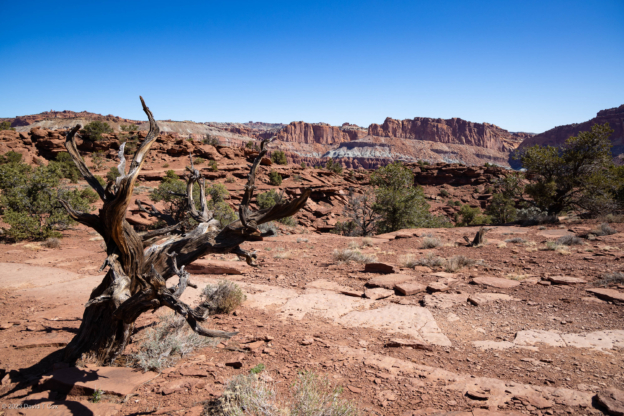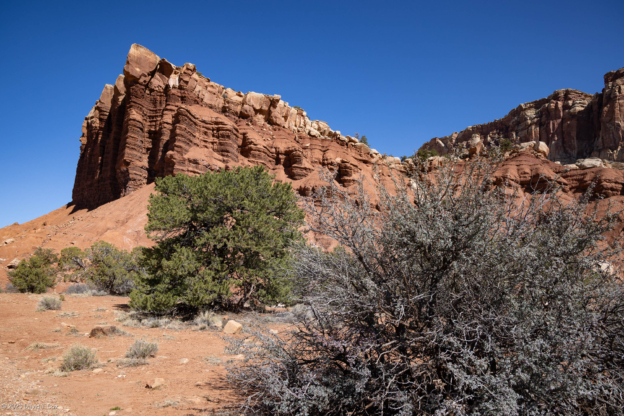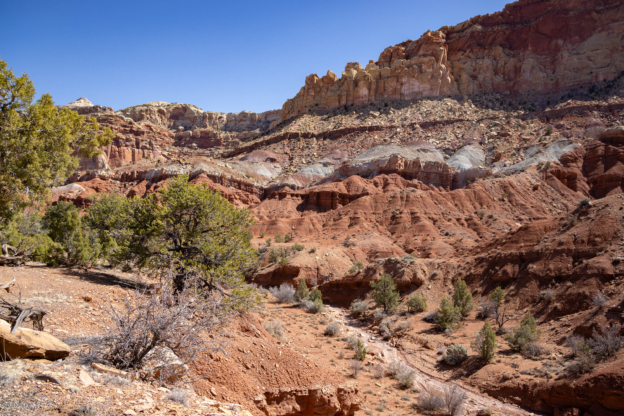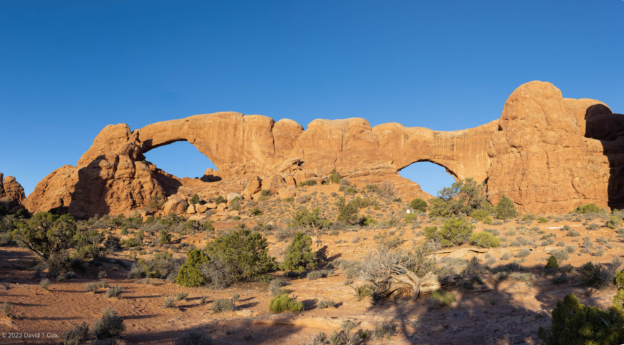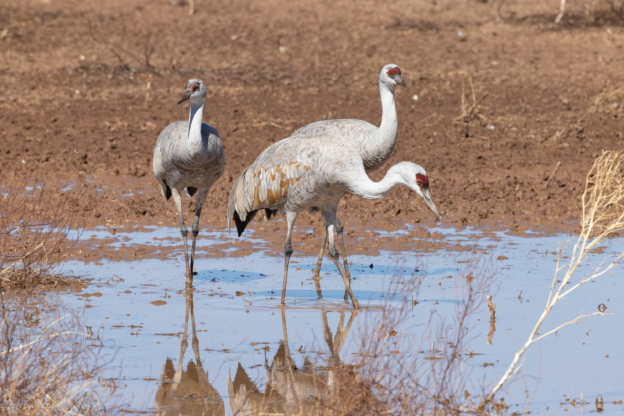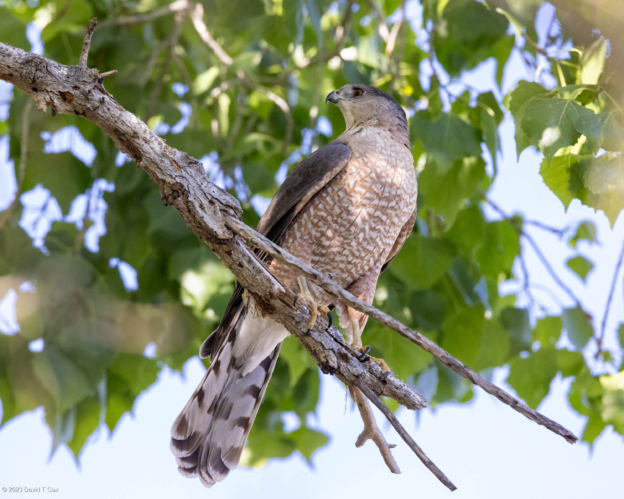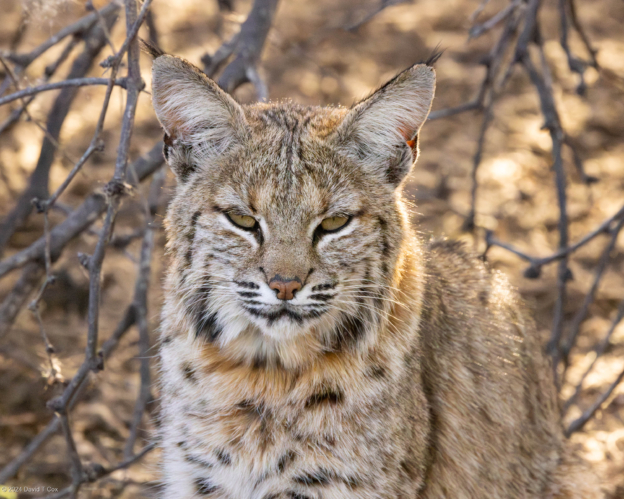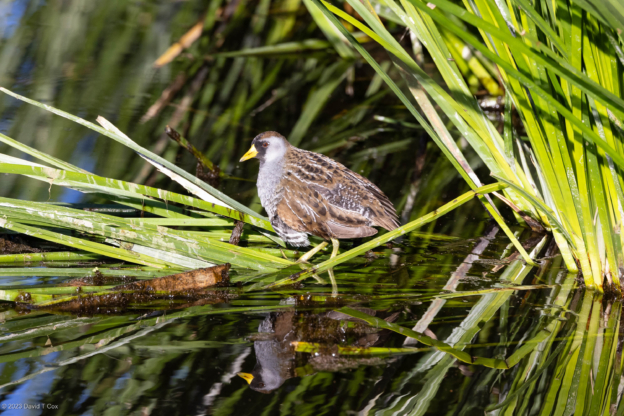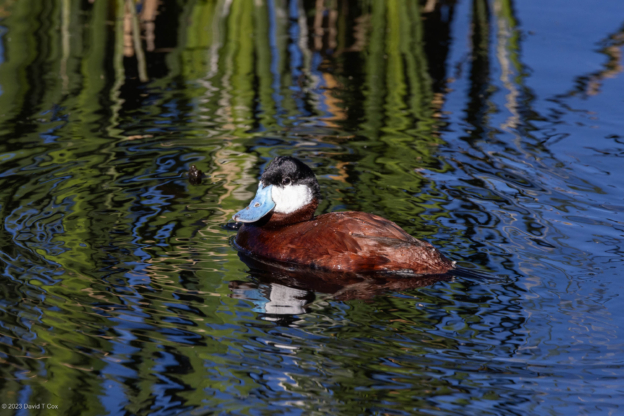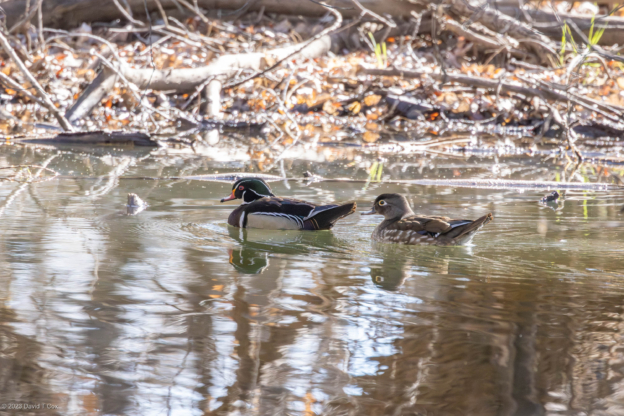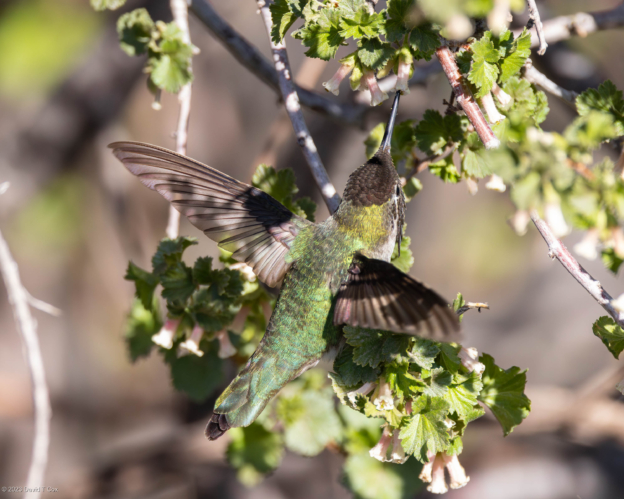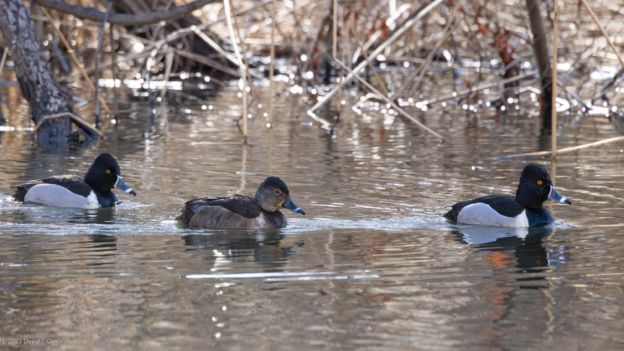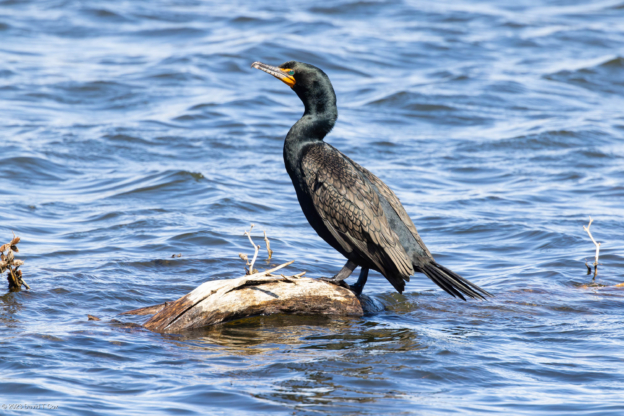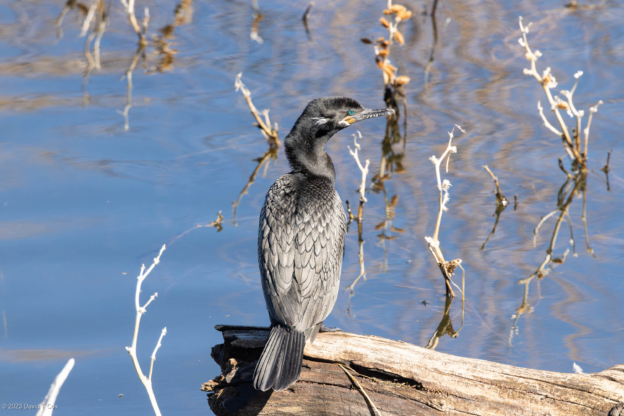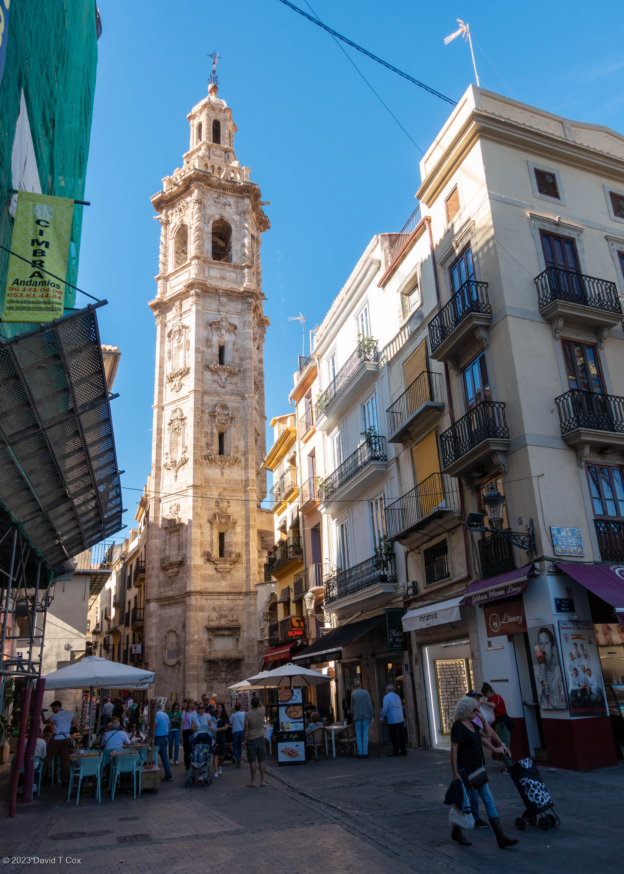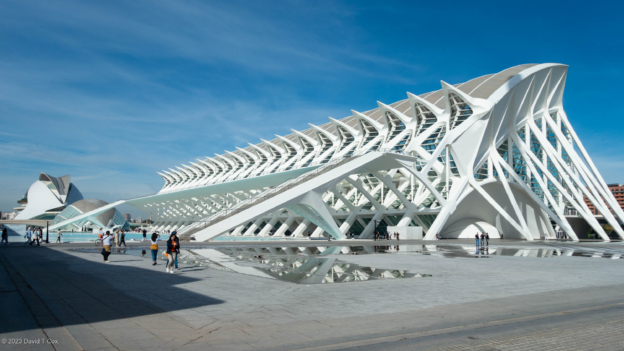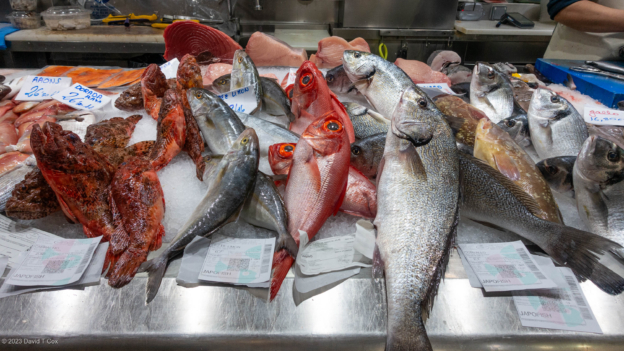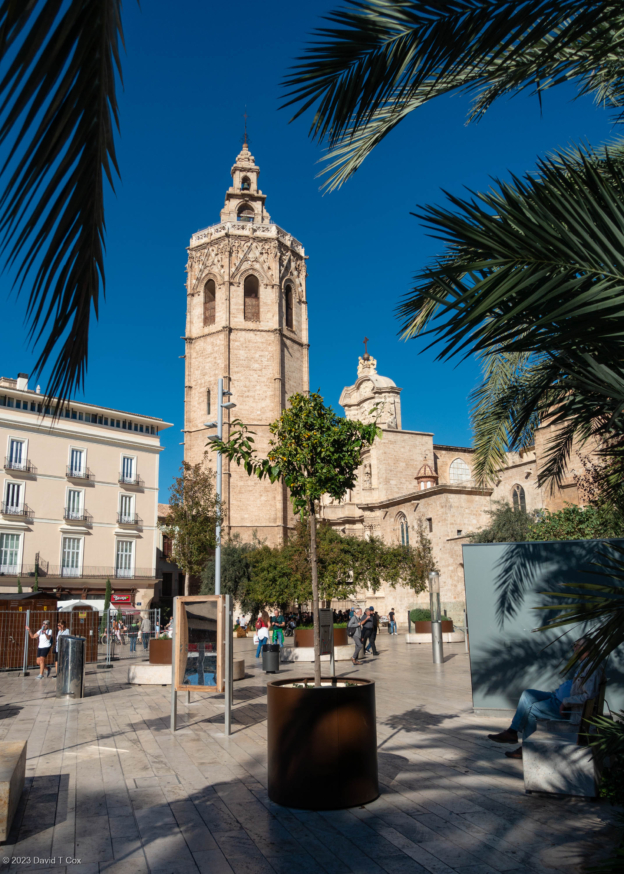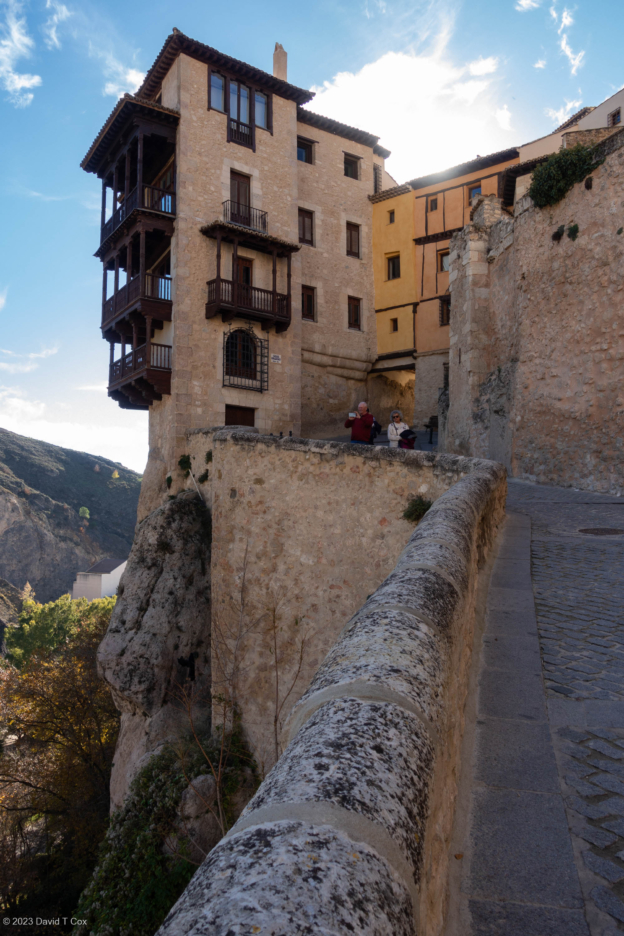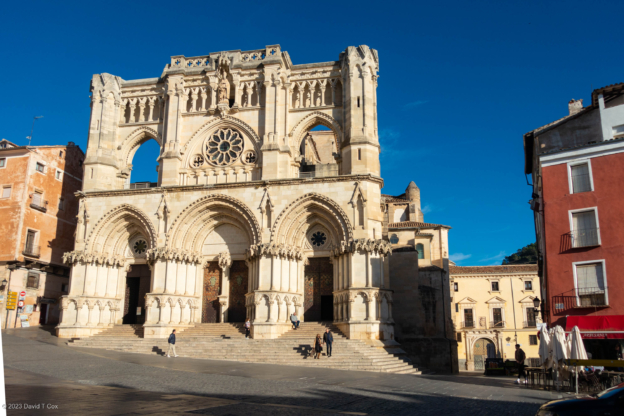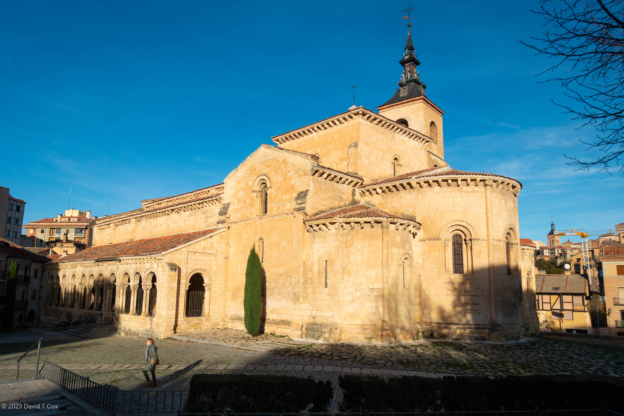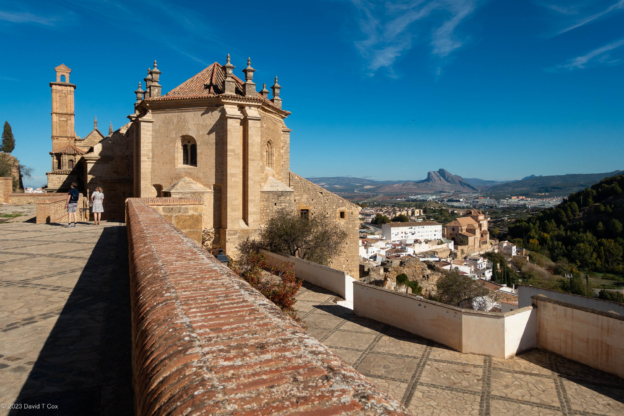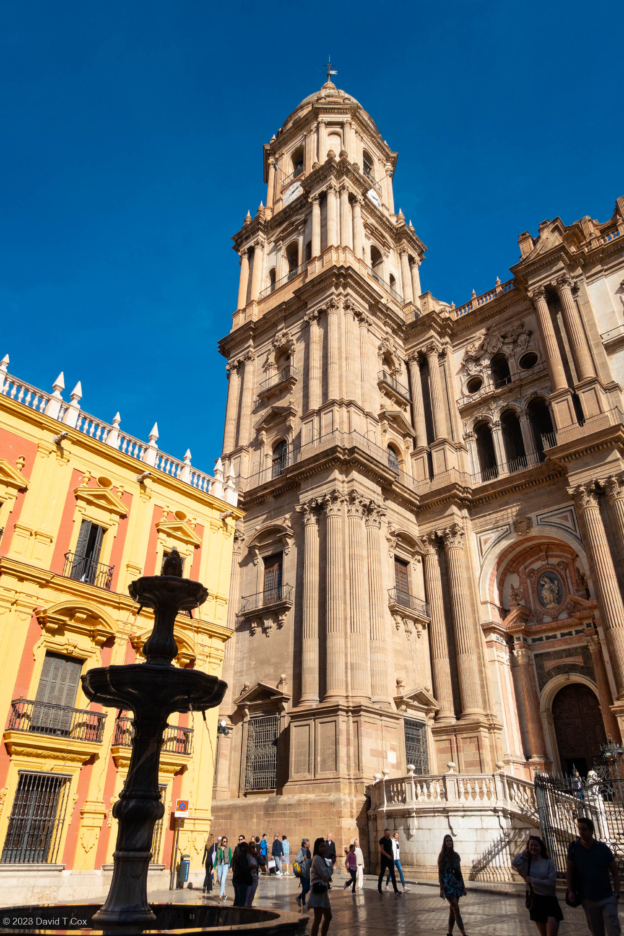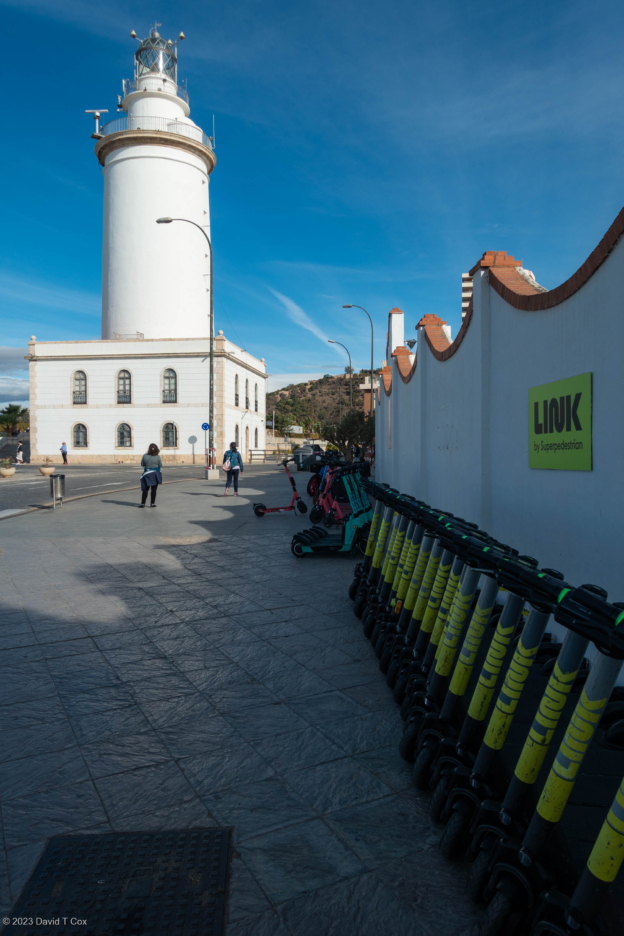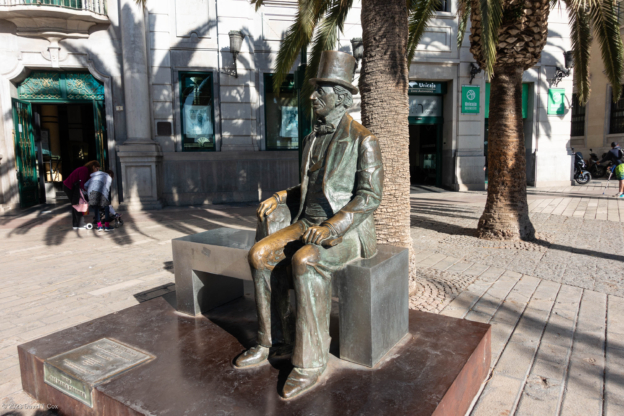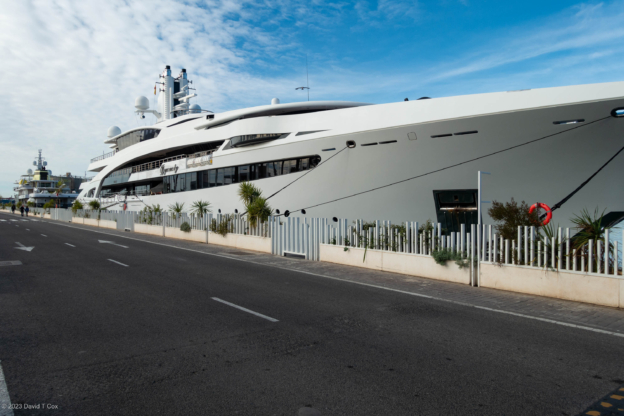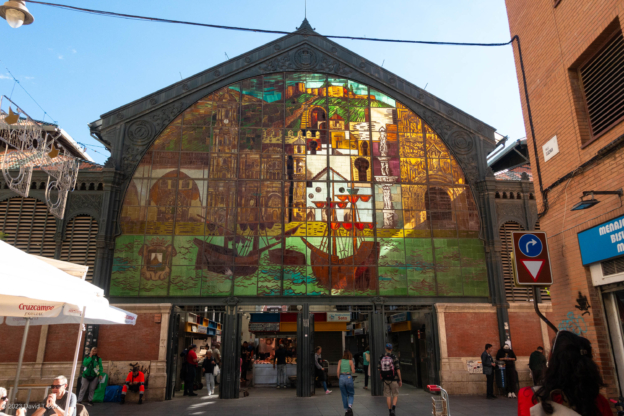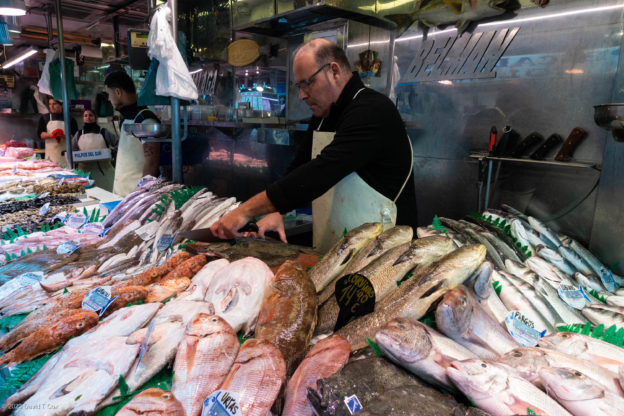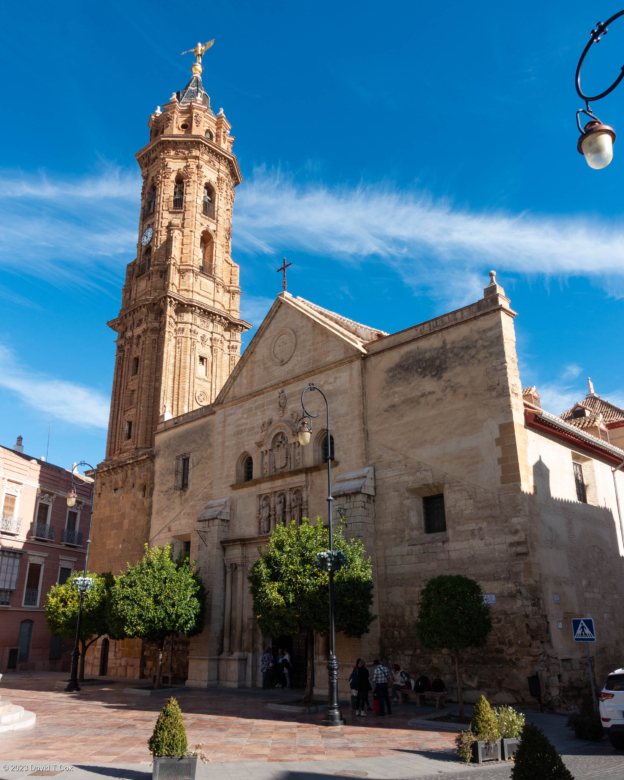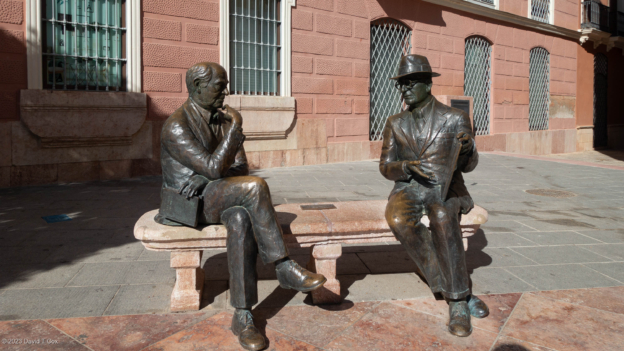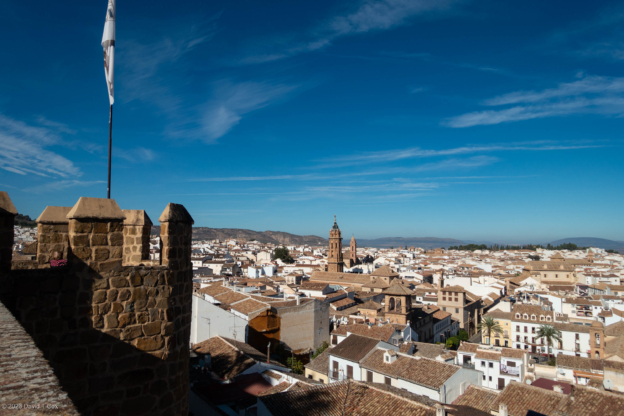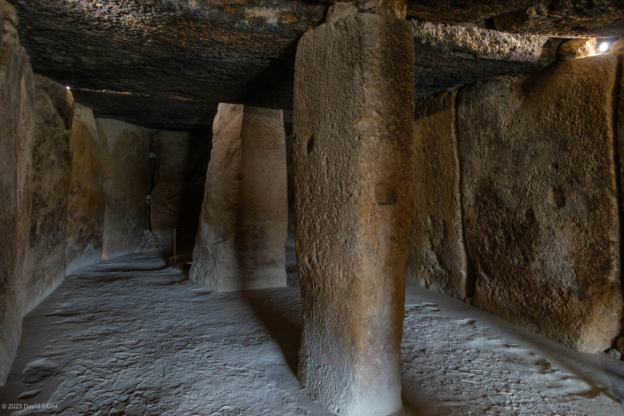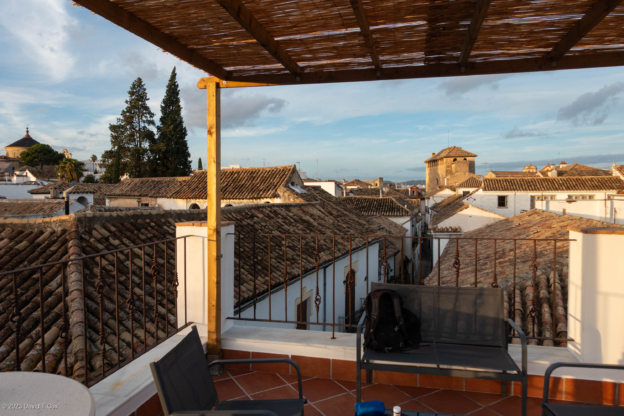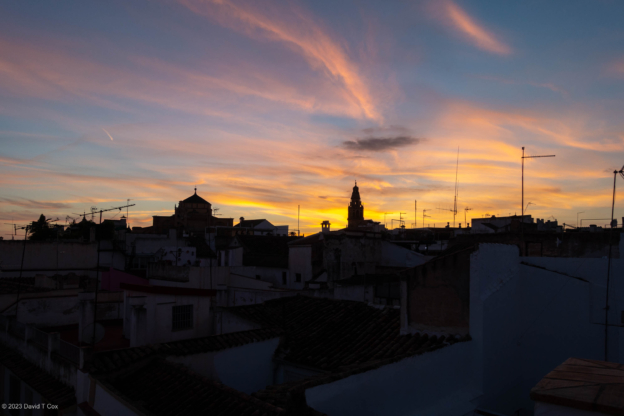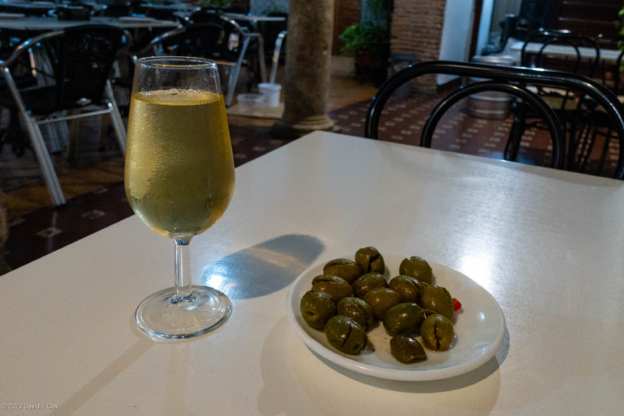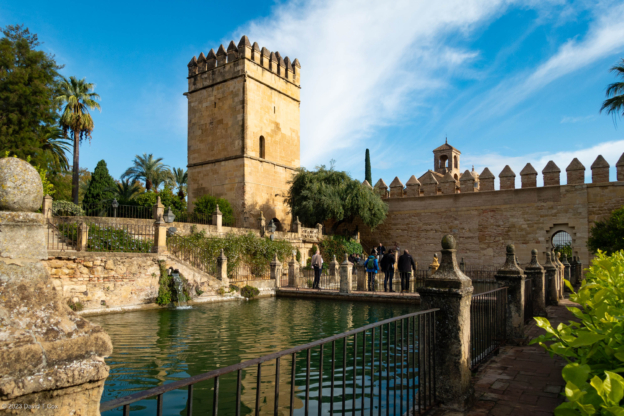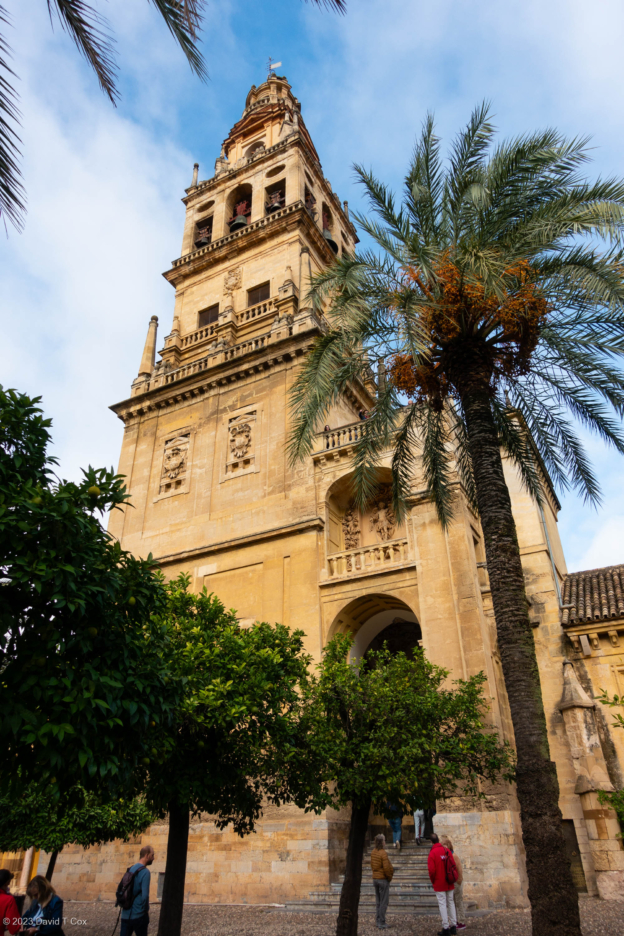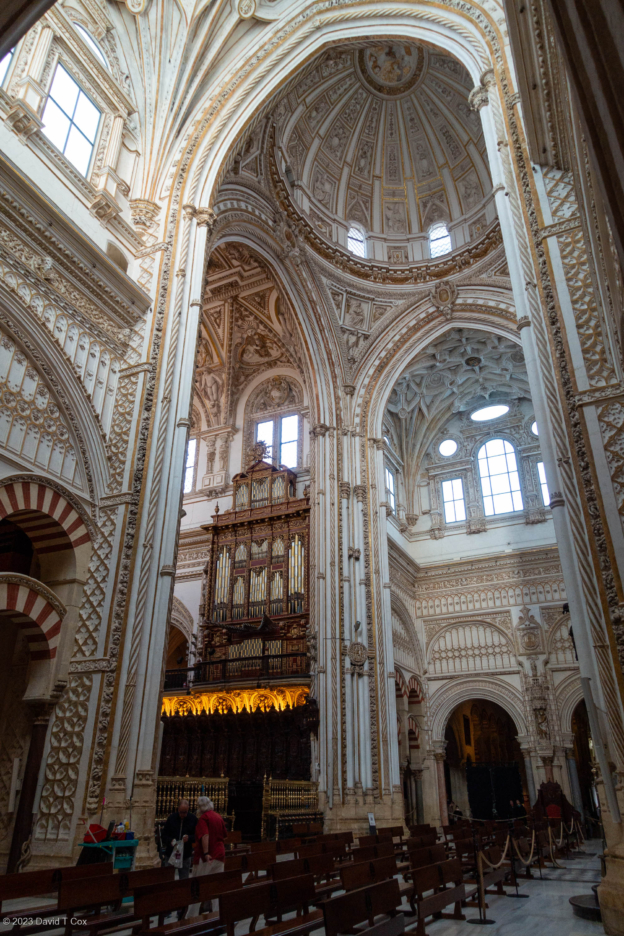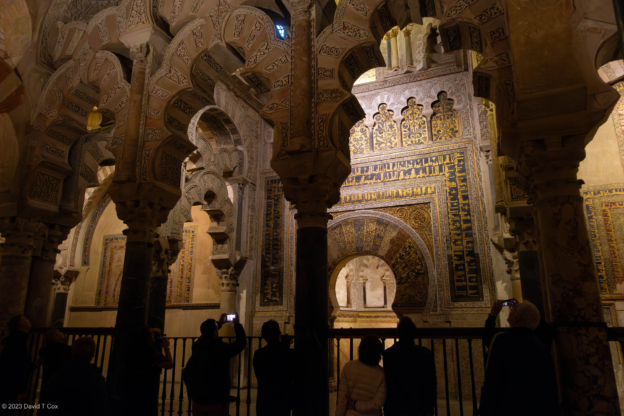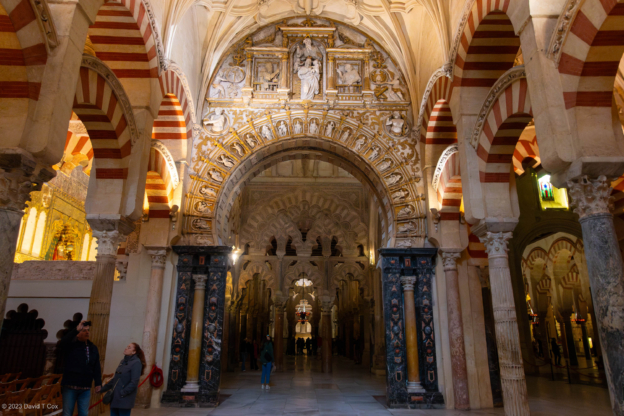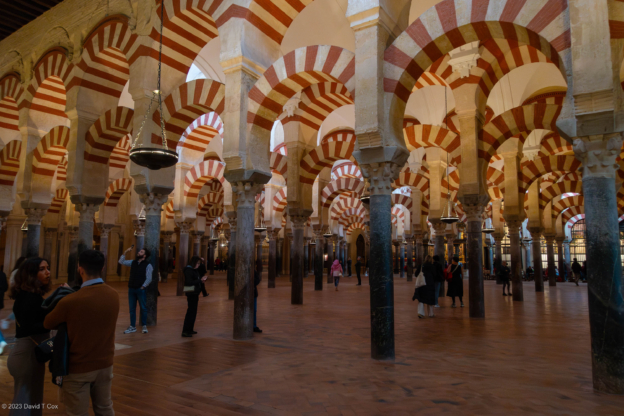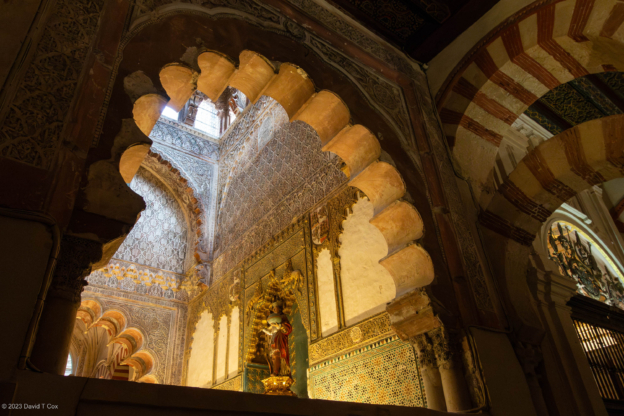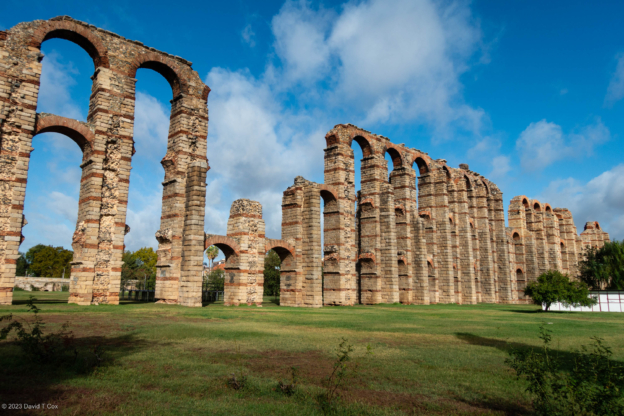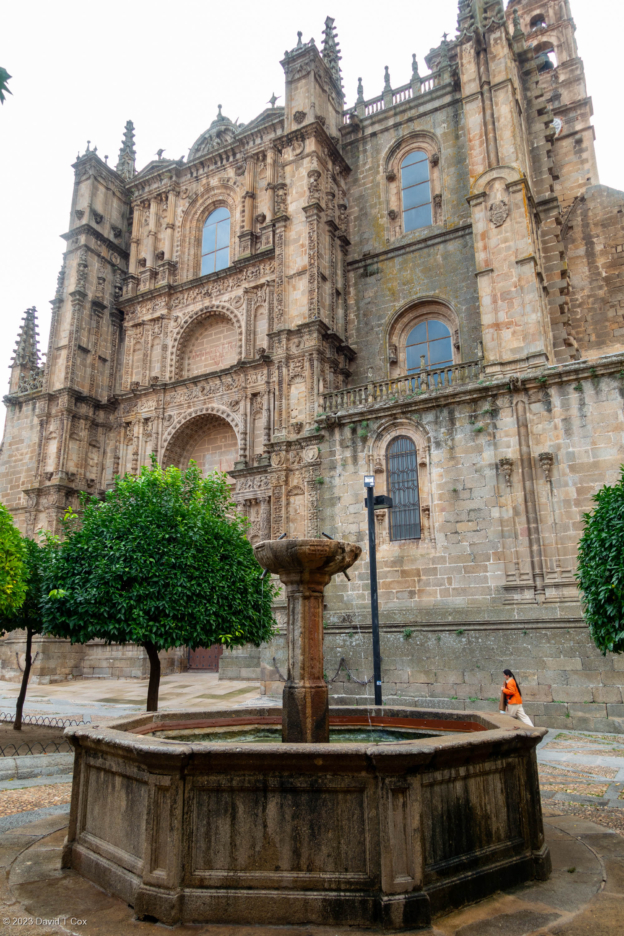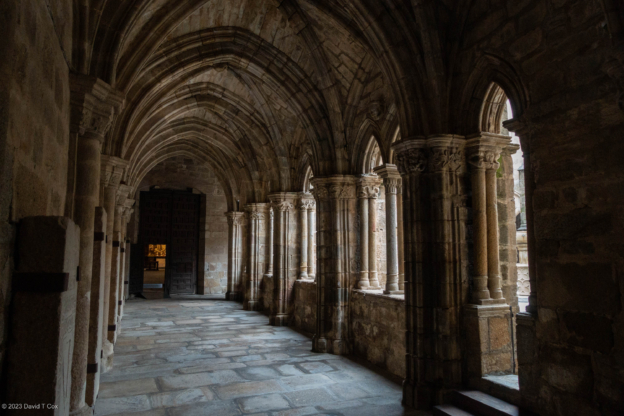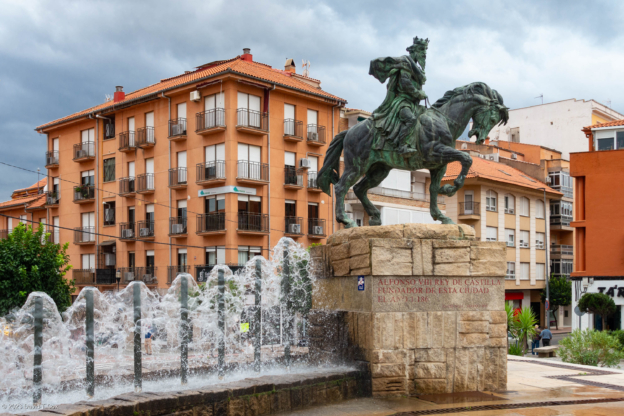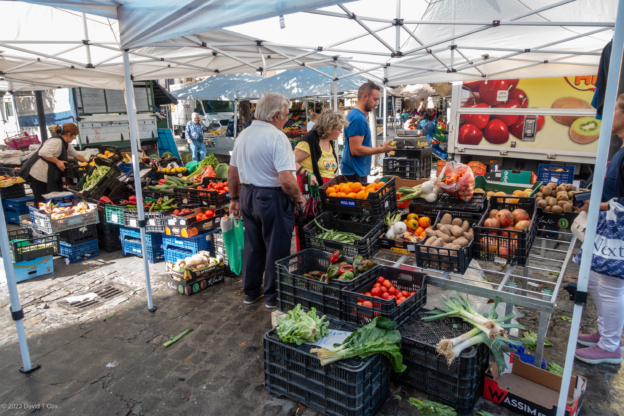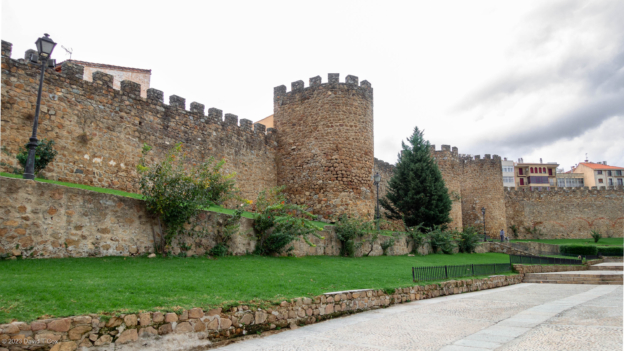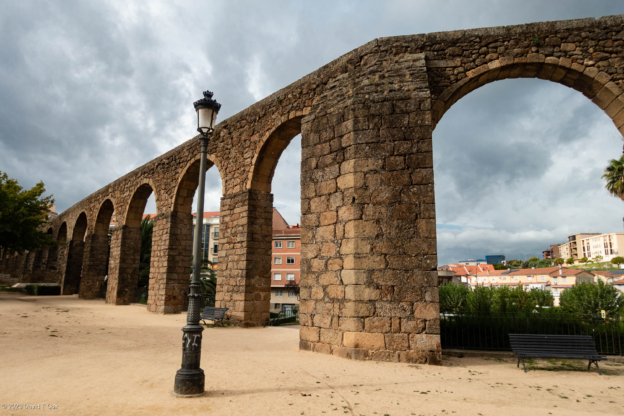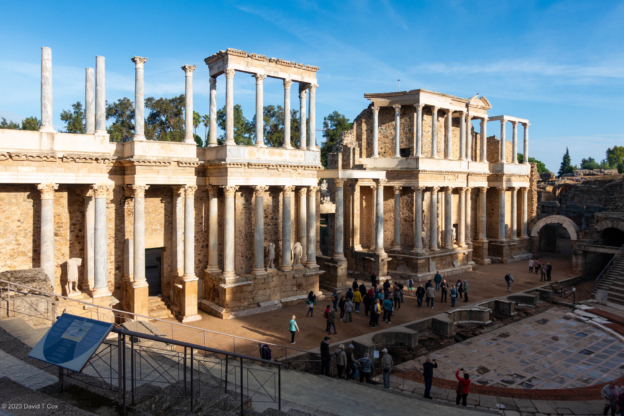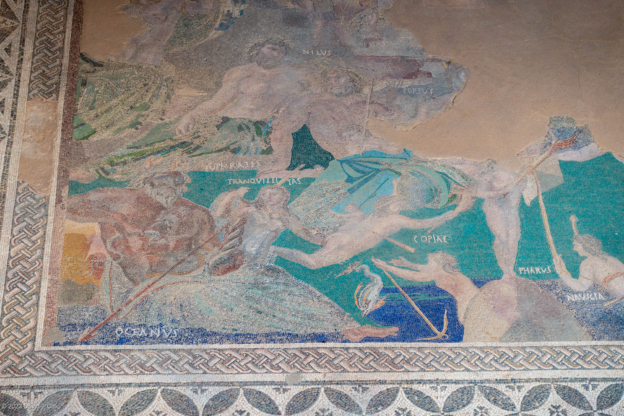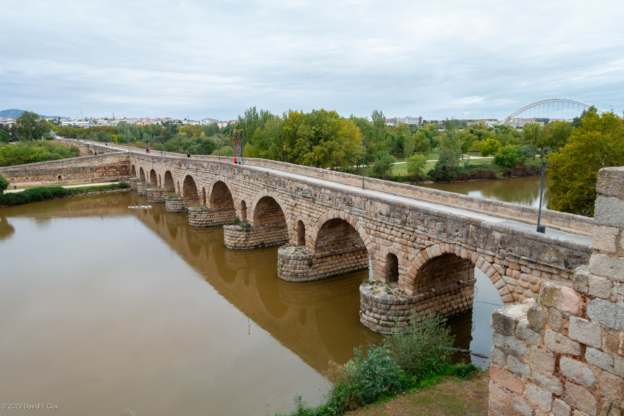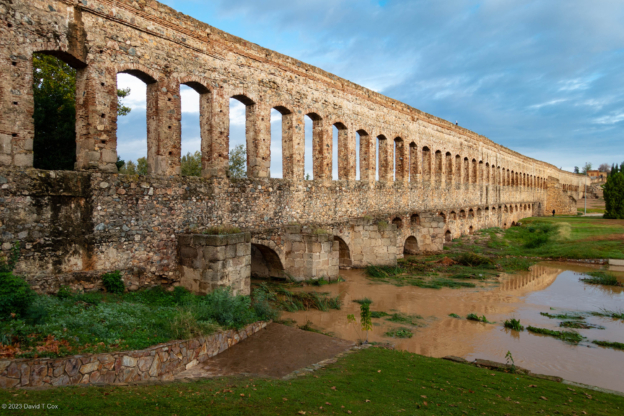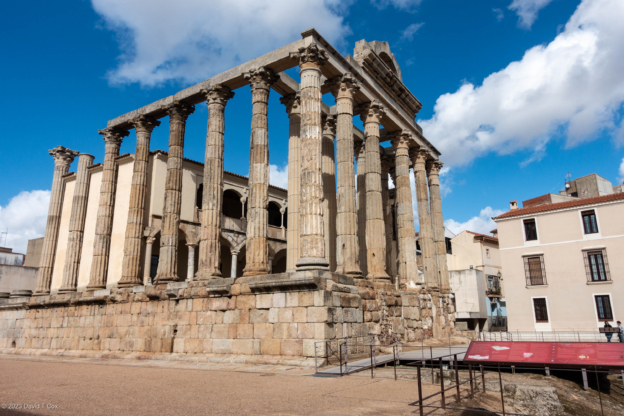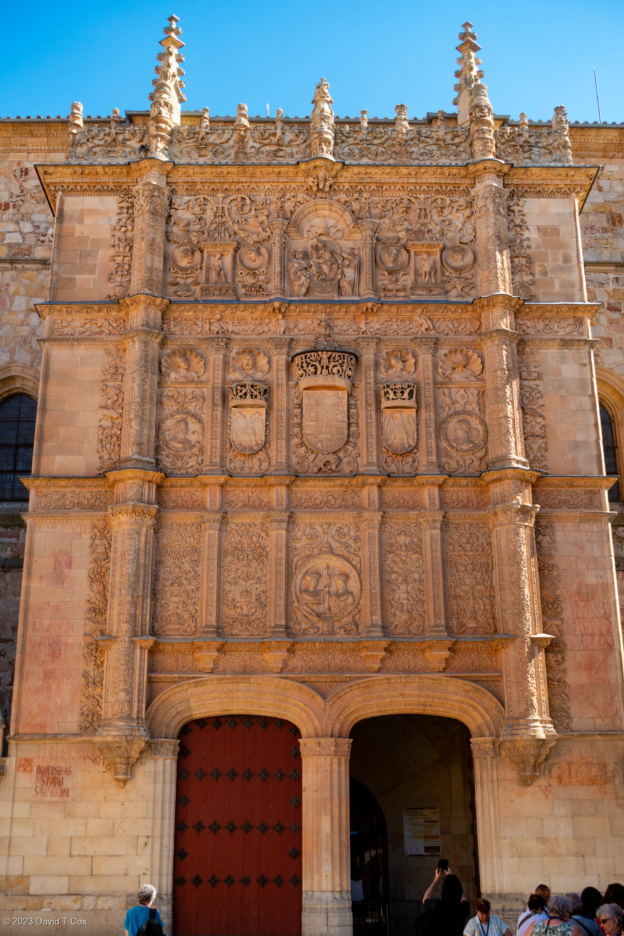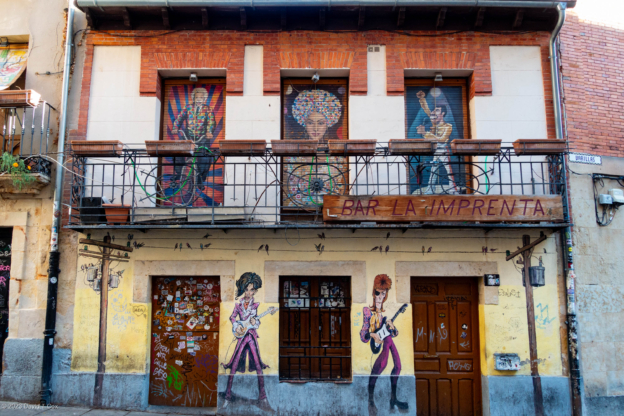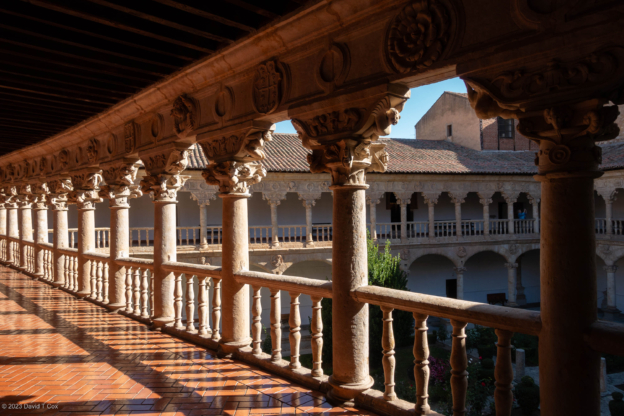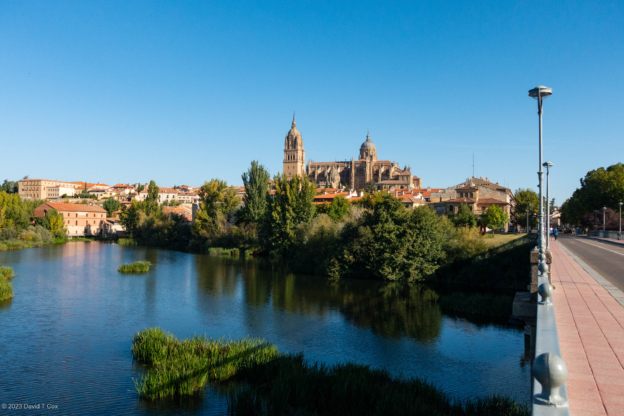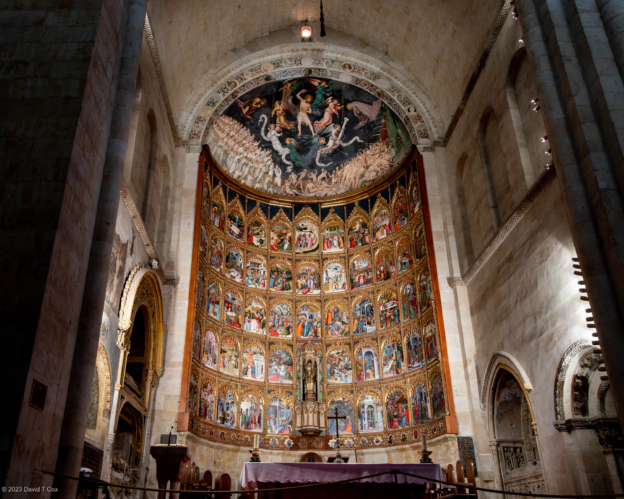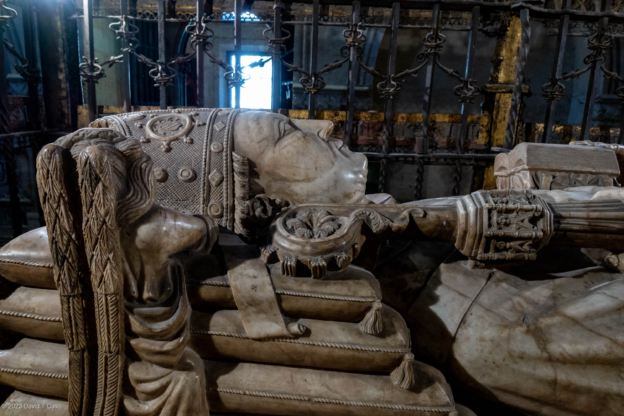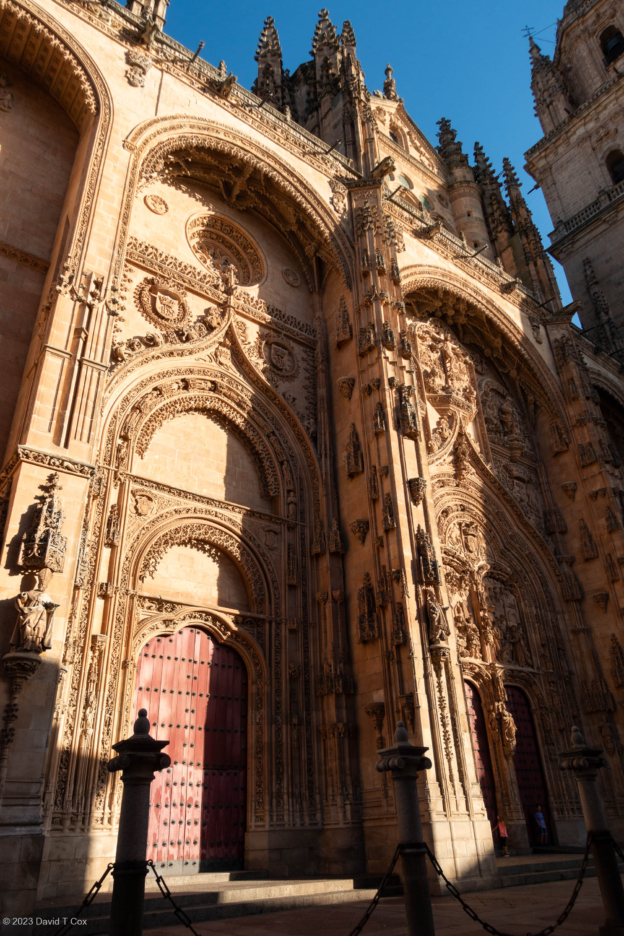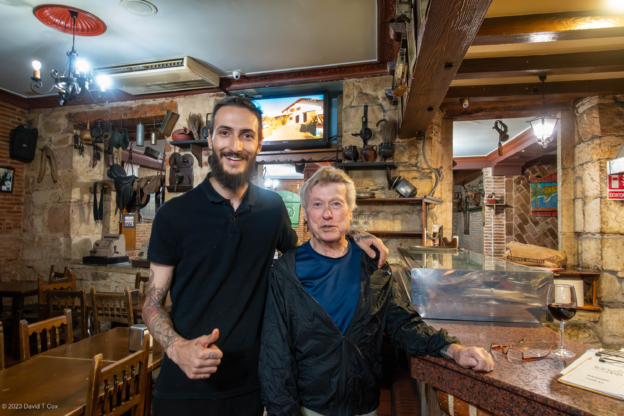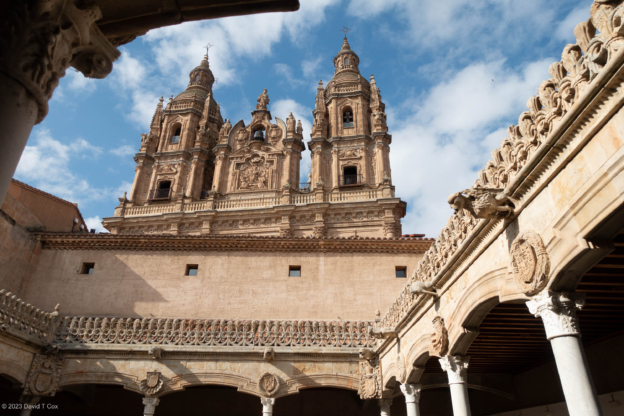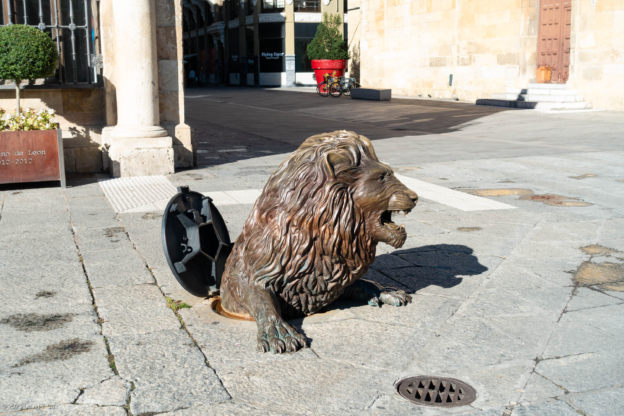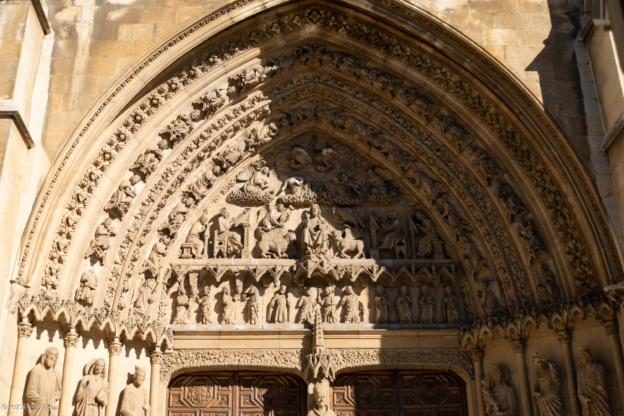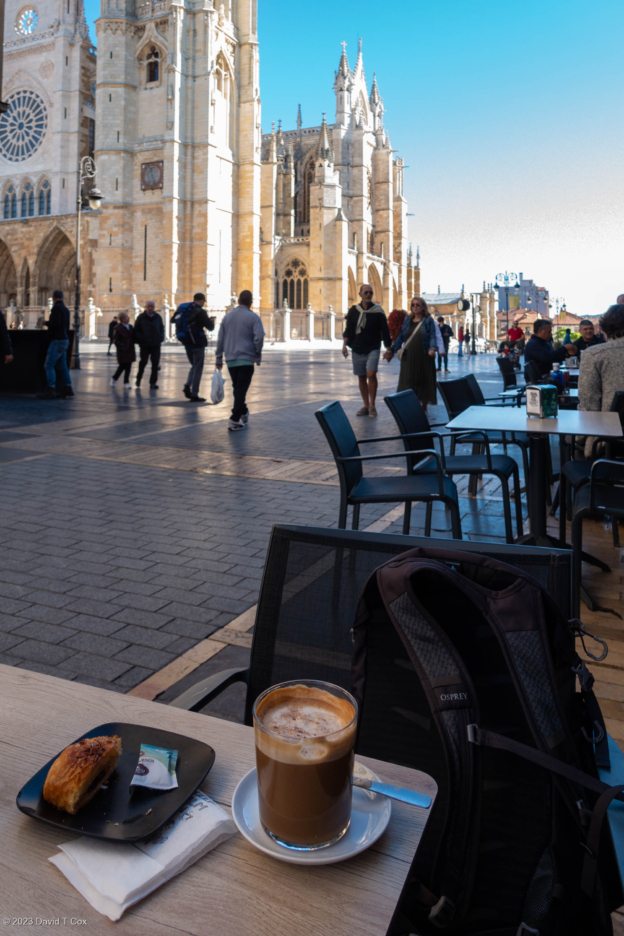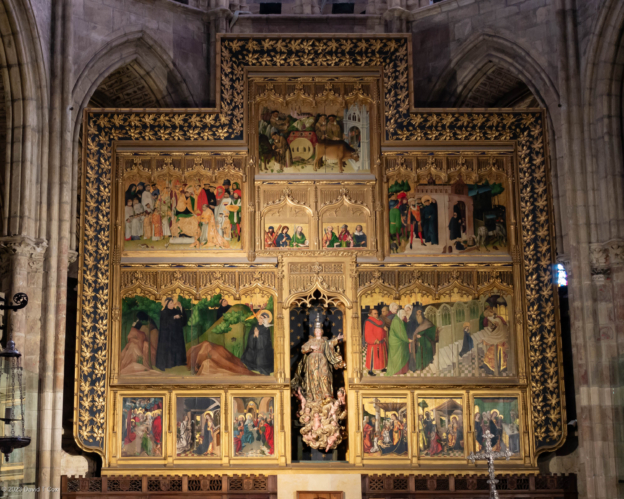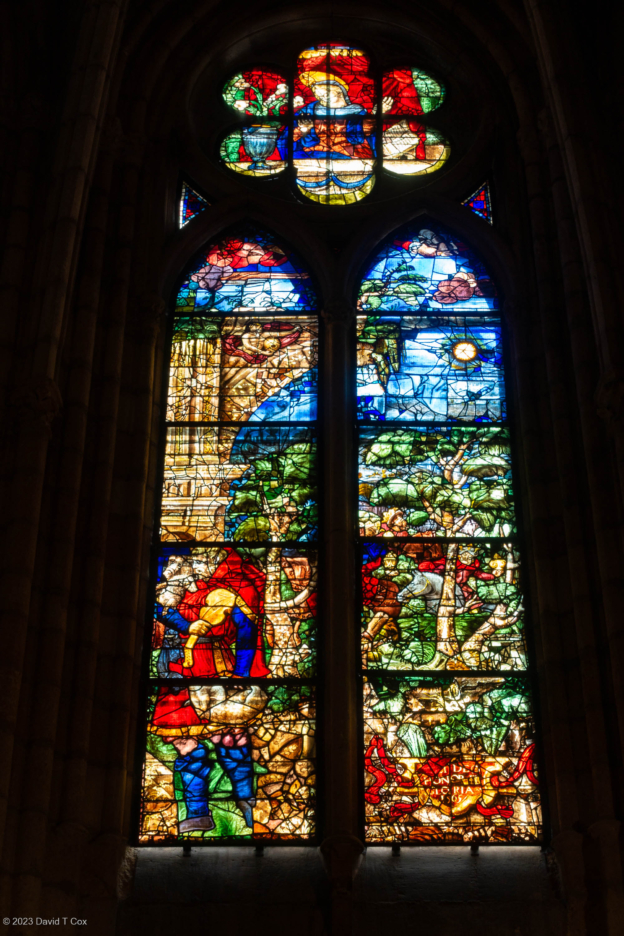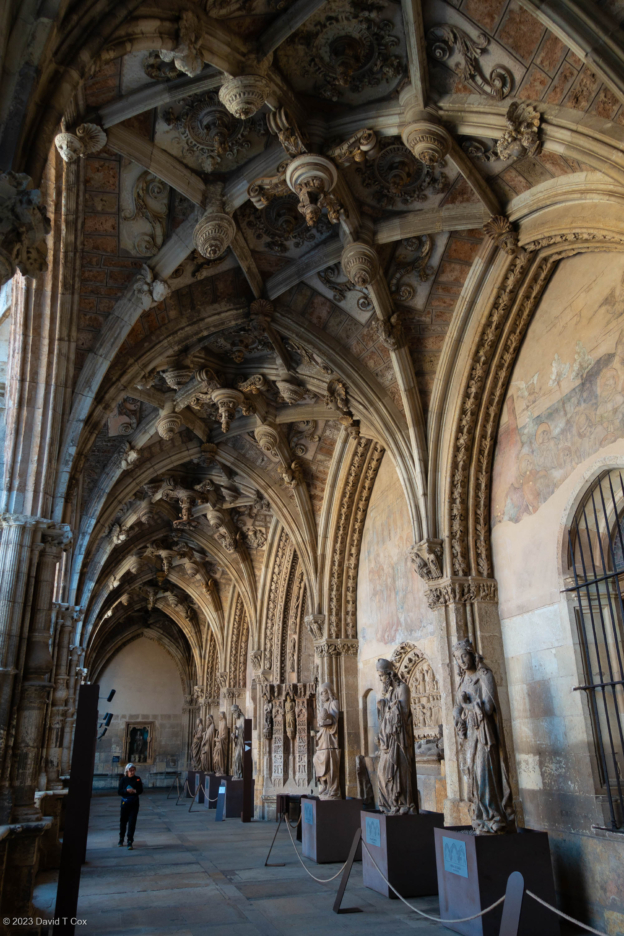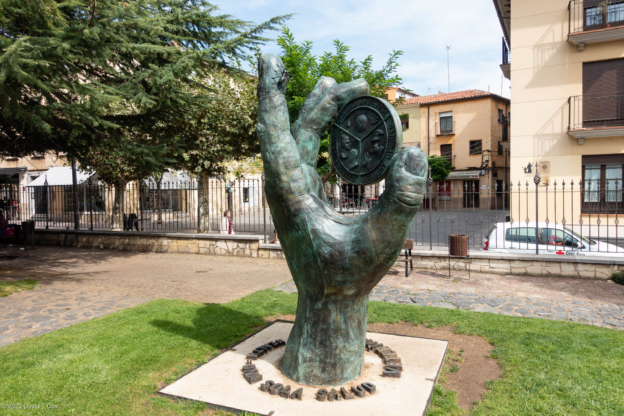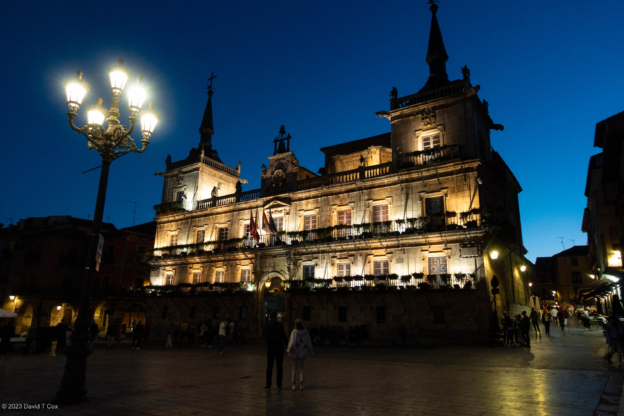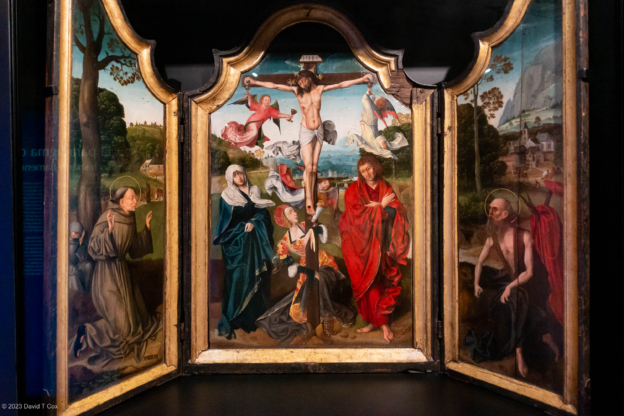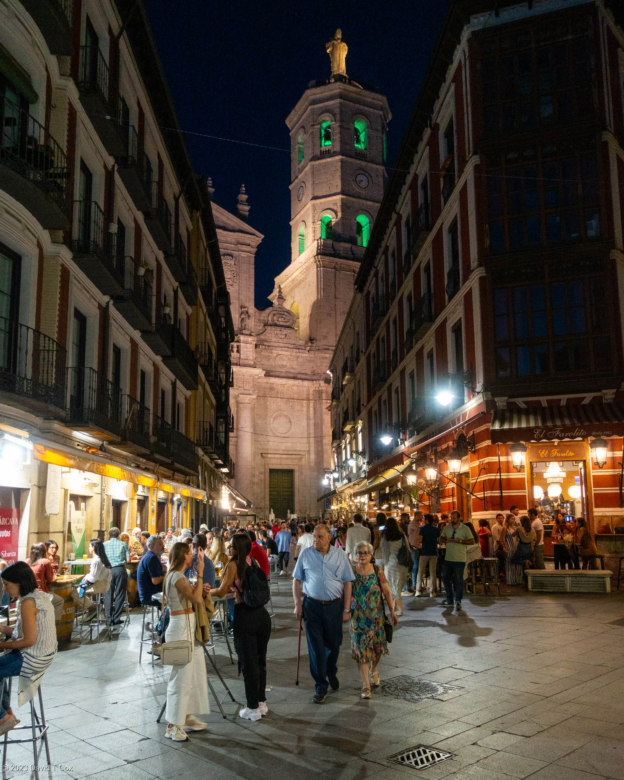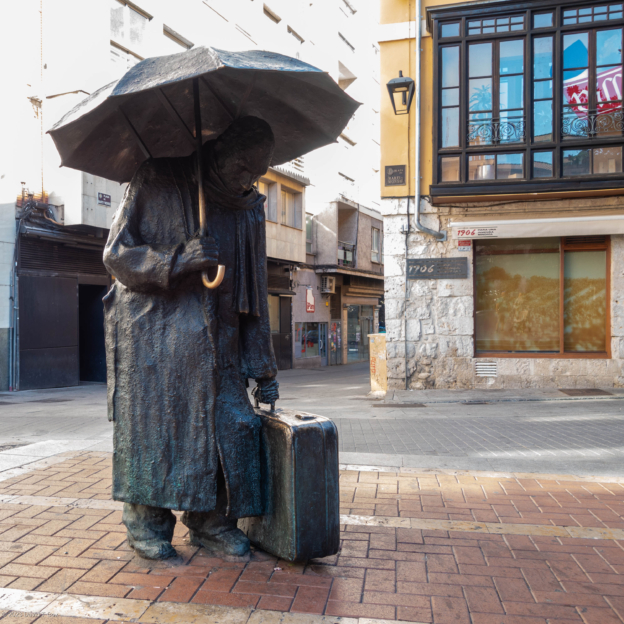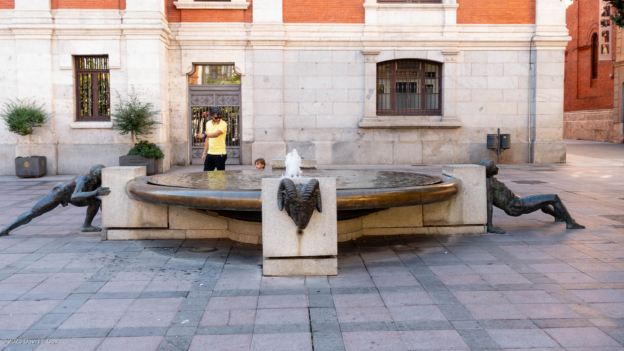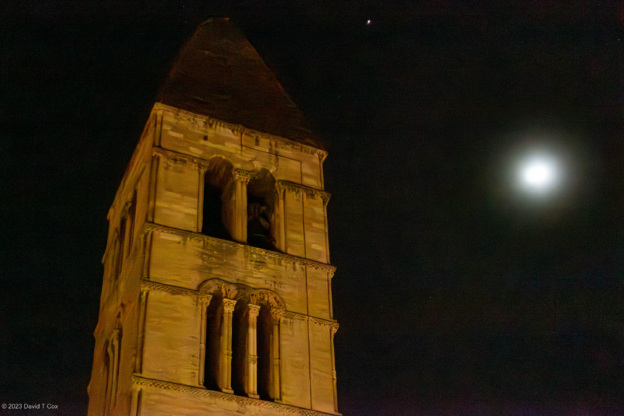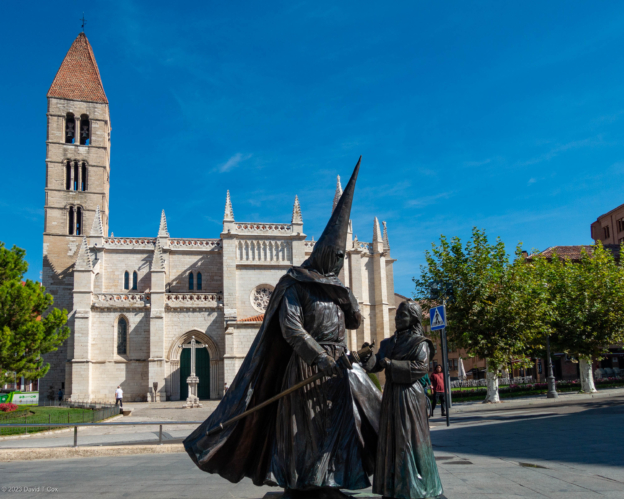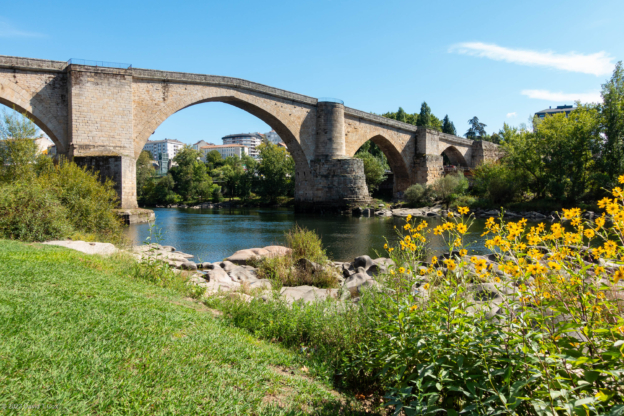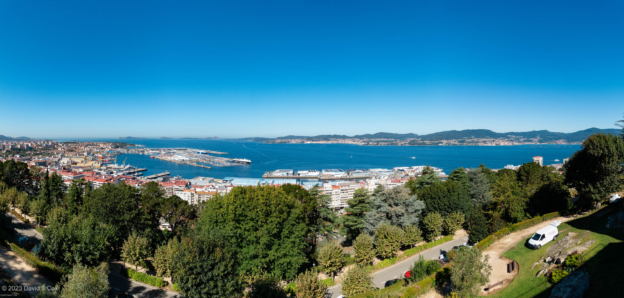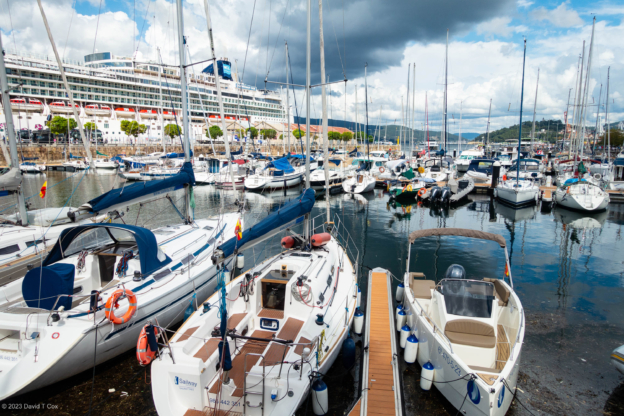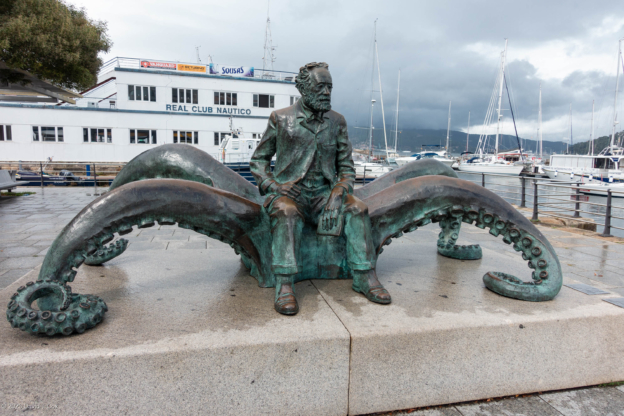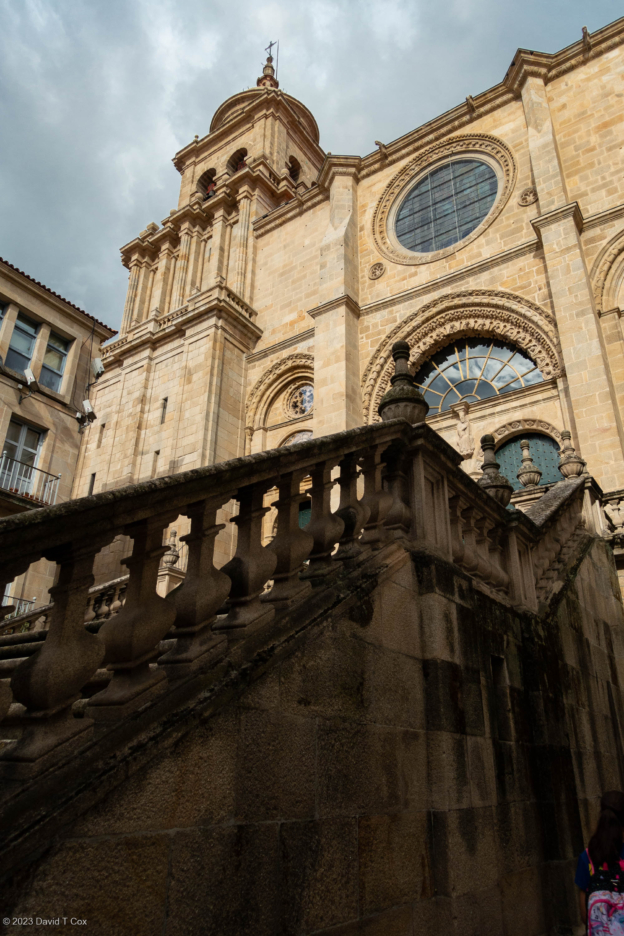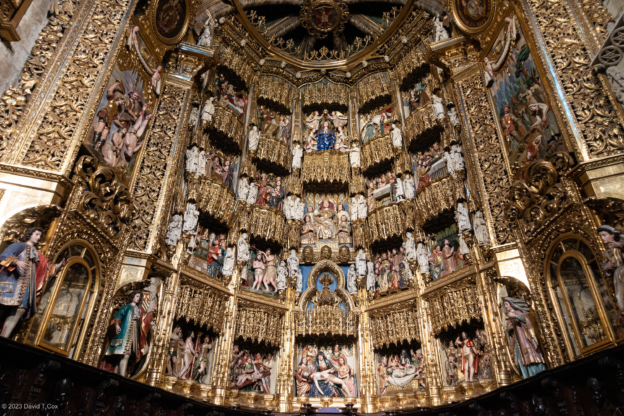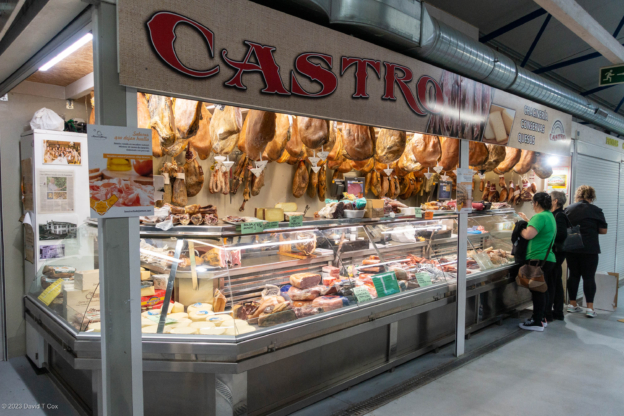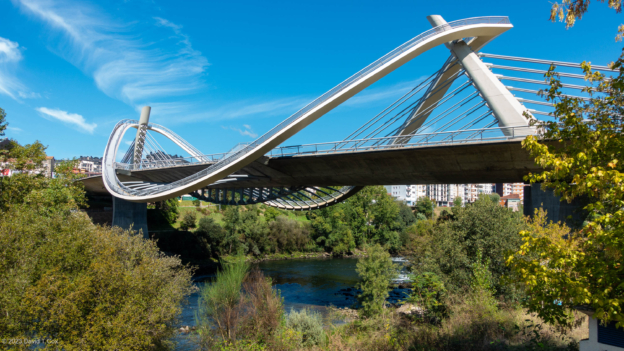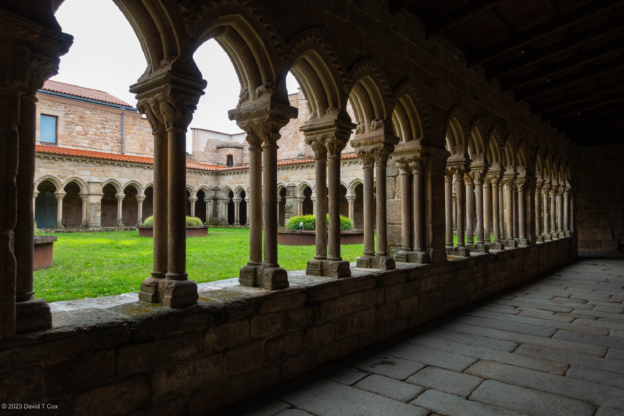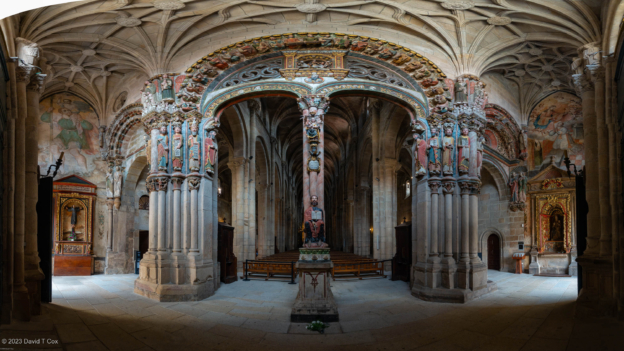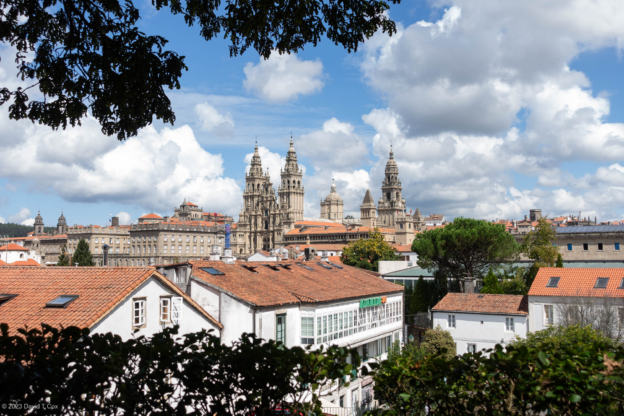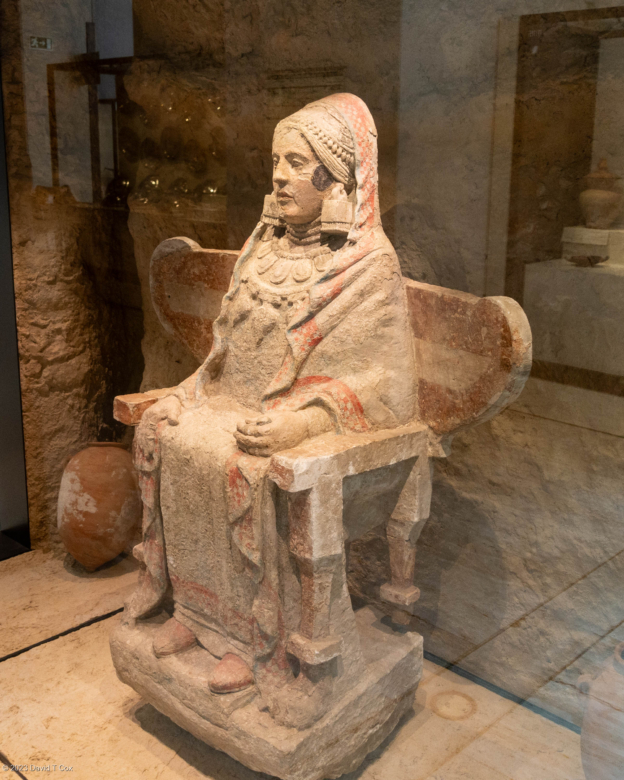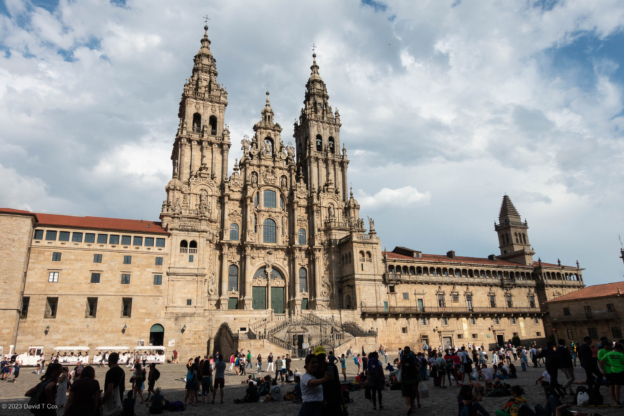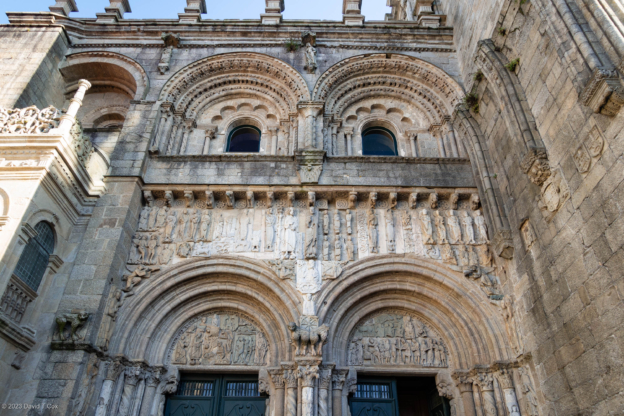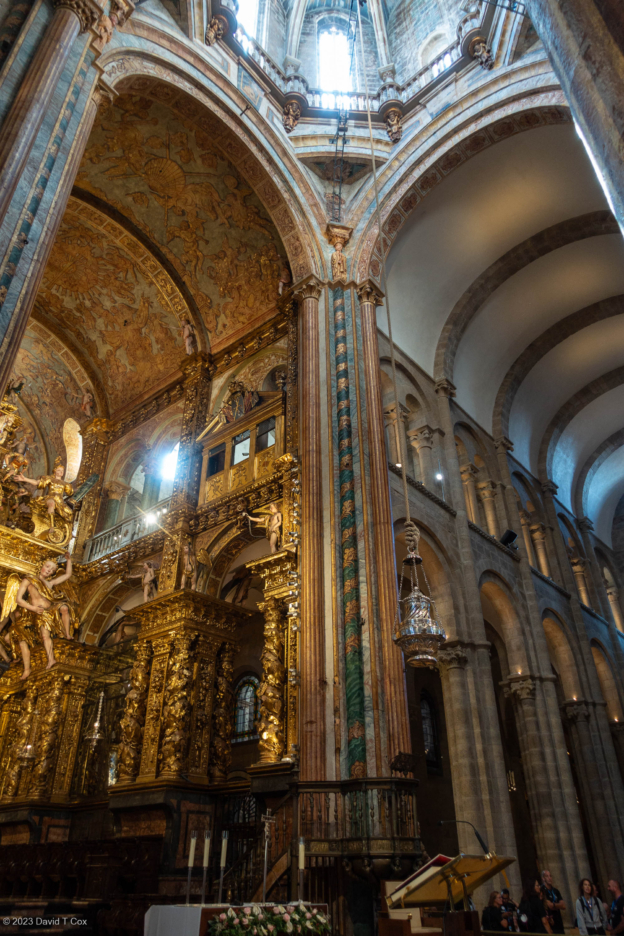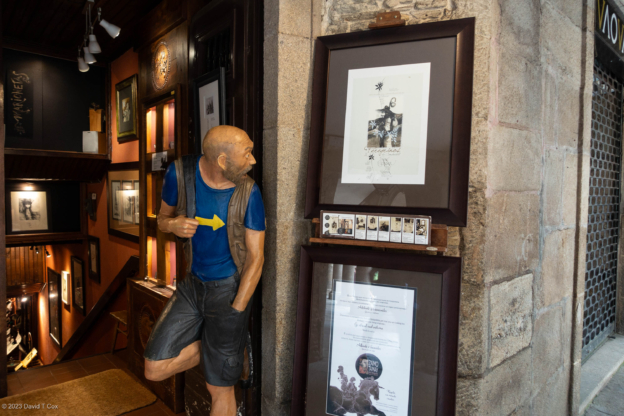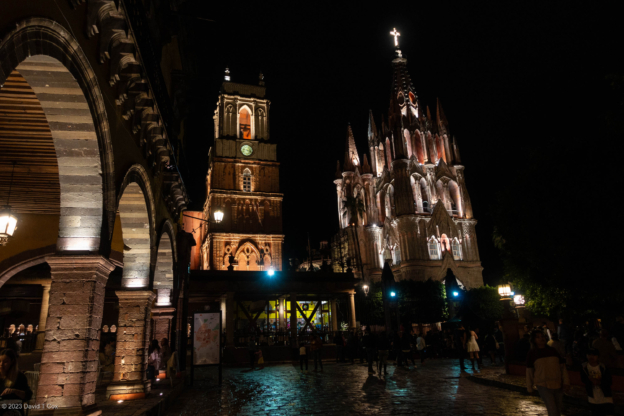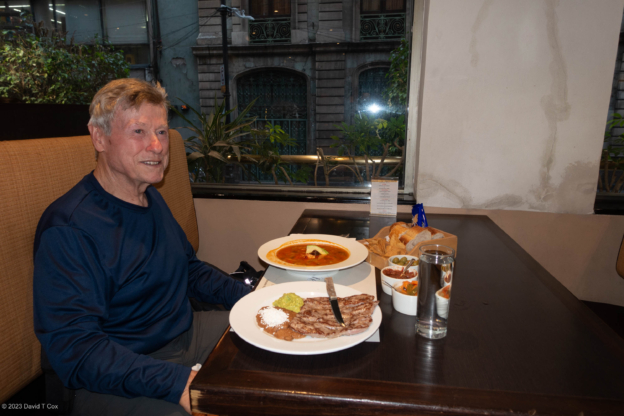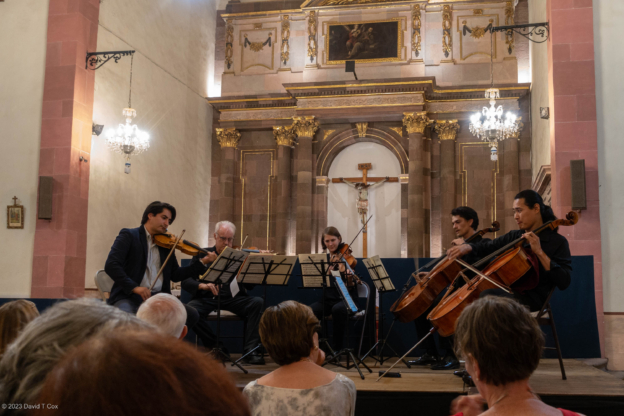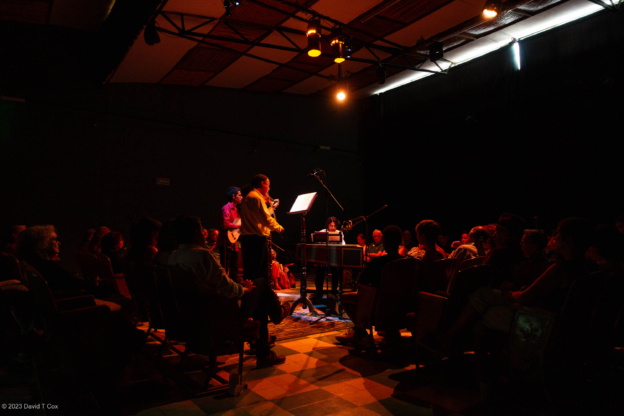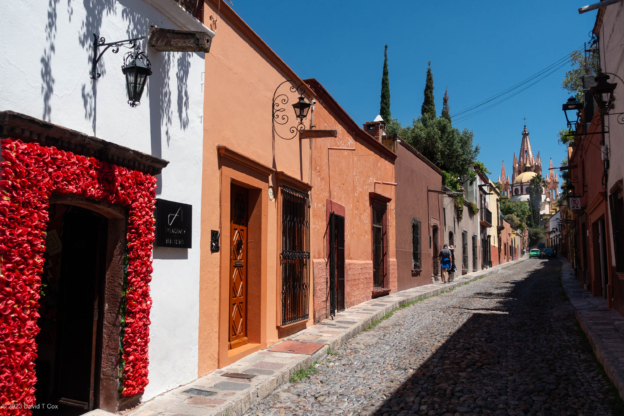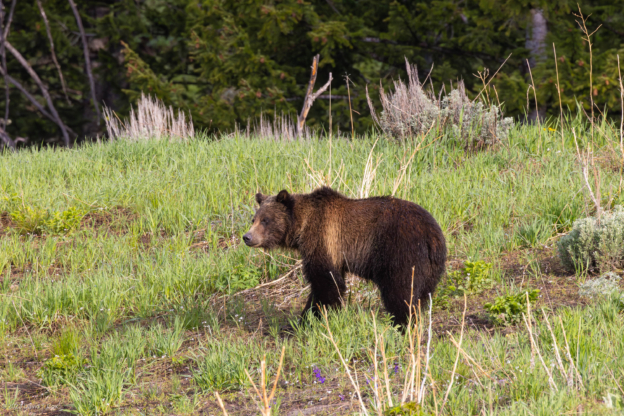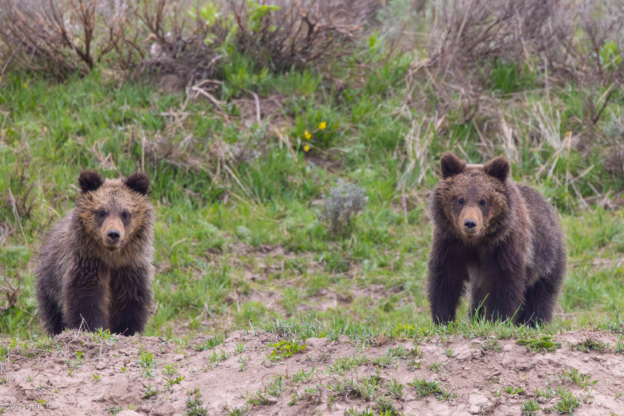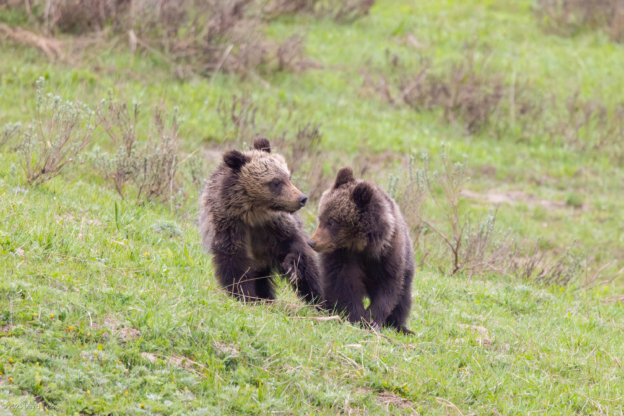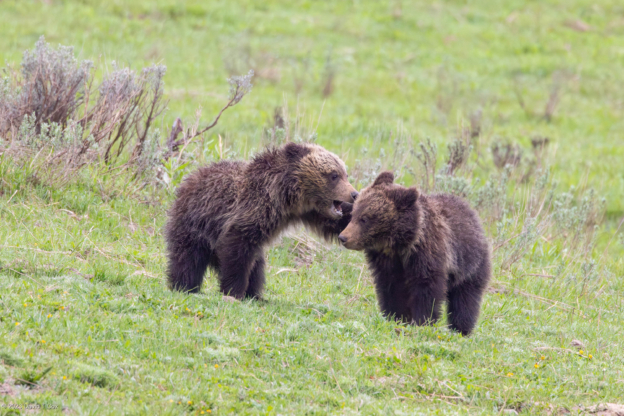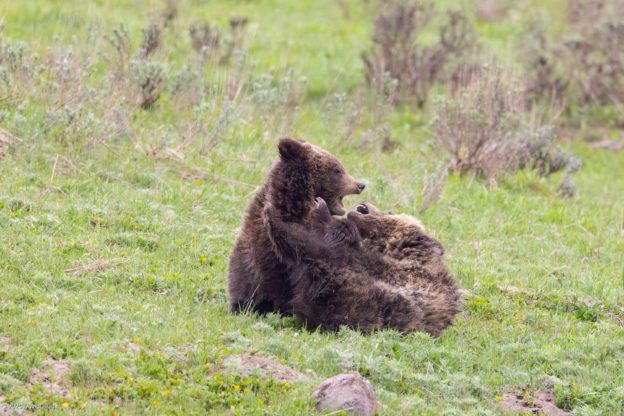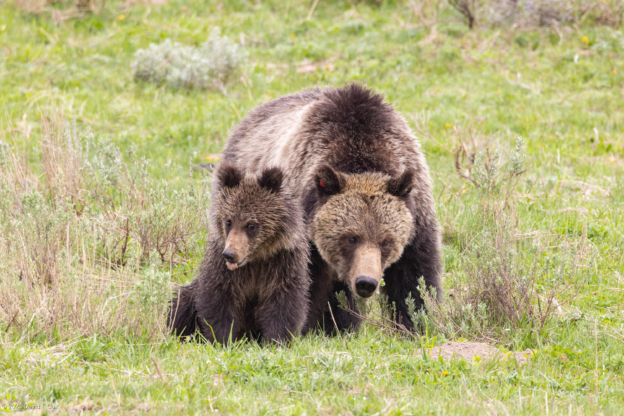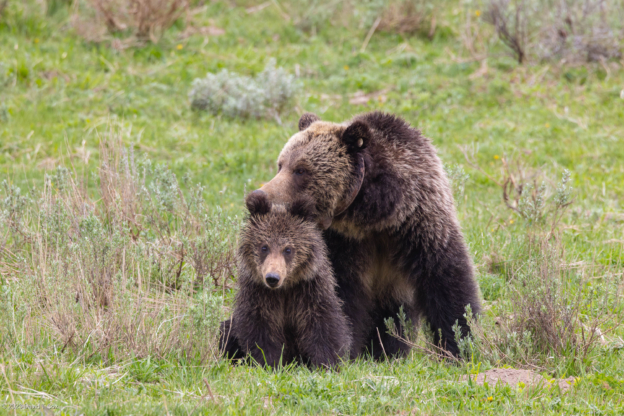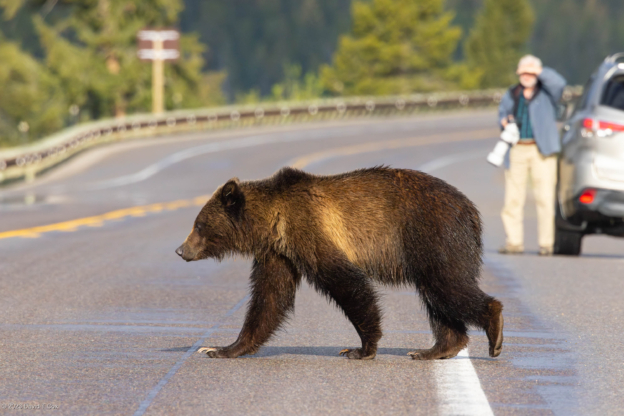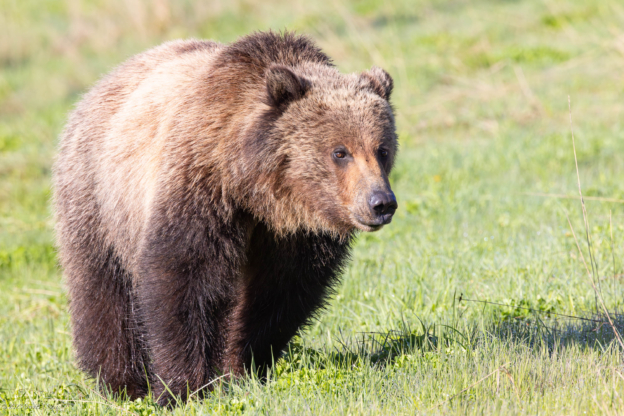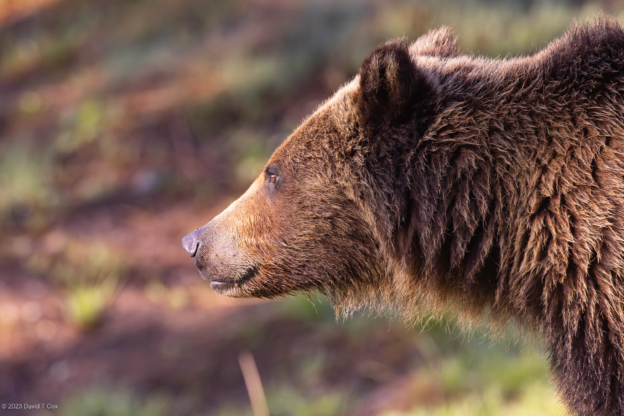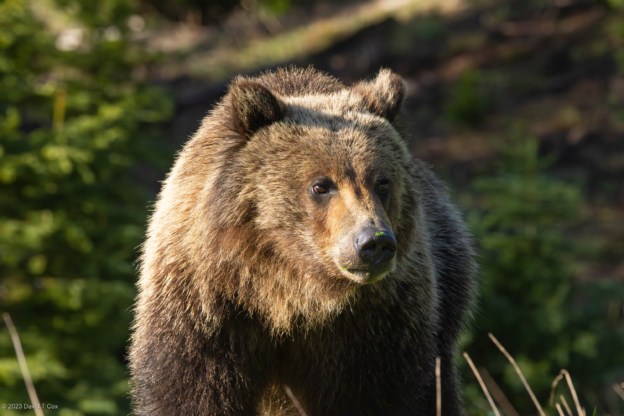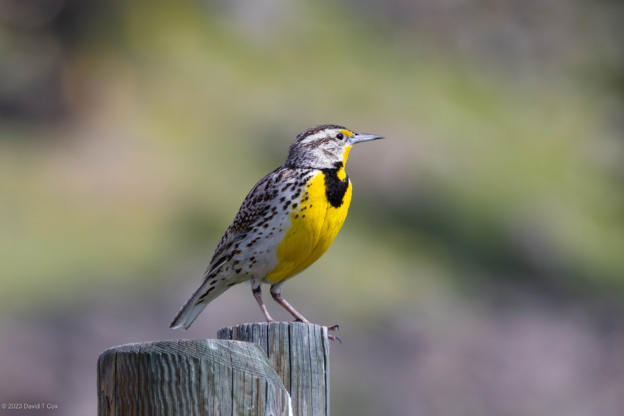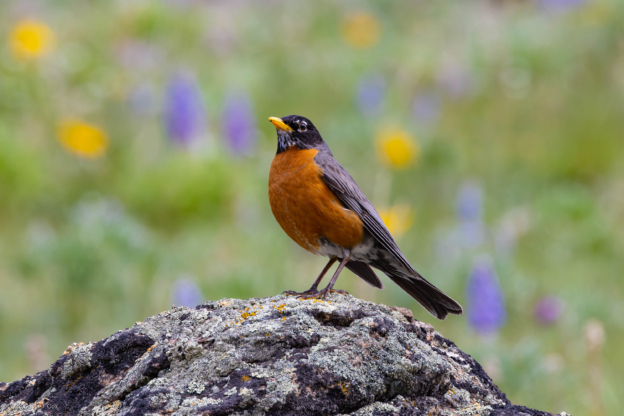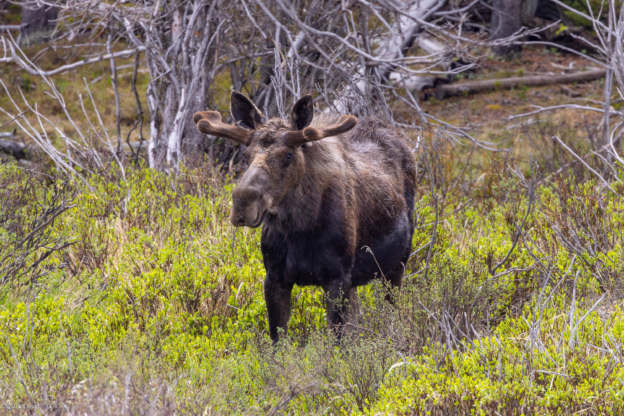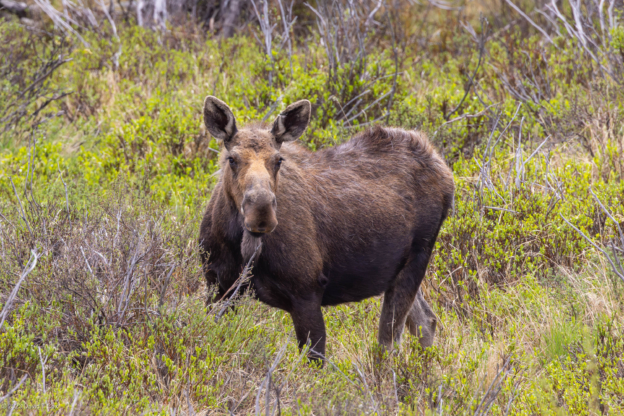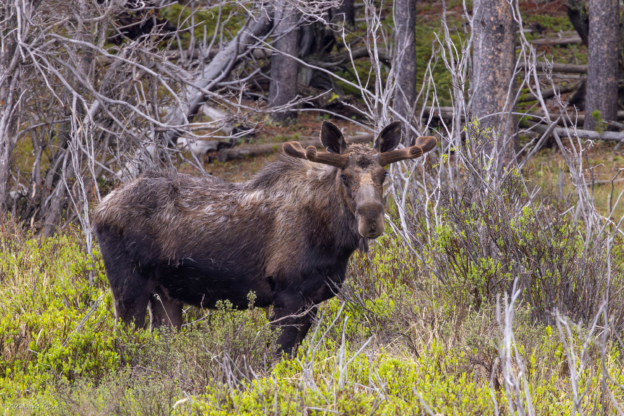My last report from Gardiner promised more Grizzly photos; they are included below. The first mama bear is known as Obsidian because of her homebase near Obsidian Cliff. I spent 2 hours following her and her 3 second year cubs during a heavy snowstorm for some great photo opportunities. Another mama bear, known as ‘Snow’ due to her light fur when a cub, I found twice with her 2 second year cubs near her homebase of Steamboat Point. Snow was the star of my grizzly photos 3 years ago, when she performed acrobatics on the log filled mountain side near Steamboat Point. This year she paid zero attention to the groups of photographers below on the roadside. Her cubs, to my dismay, were rather sedate – no rough and tumble.
Other grizzlies include last year’s star twins in their third year – I photographed them extensively over 2 days last year when they were the second-year cubs that every 5 minutes engaged in bite and tumble rough-housing. Their mother (tagged #864) had just kicked them out a few days earlier (according to a ranger I talked to) to be on their own after 3 winters. I spotted the mother with a new huge bruiser male a few days after she kicked them out. The youngsters now were about a mile apart in the area where they were raised. The one shown sitting sadly looks lost without her mother.
I also was fortunate in photographing a lone black male wolf for which I can find no information. He was traveling through the territory of a diminished wolf pack in Hayden Valley. My photos show him to be a beautiful black with orange highlights. I have included 2 photos in close sequence while he was hunting down an under-snow rodent (he tried but failed to catch it).
I had a couple of sad moments: first while still in Lamar River Valley, at the junction of the Soda Creek, a new-born bison calf (a red dog) failed to make it across the fast flowing river with its mother, and I watched its last minute of effort to keep its nose above water as if flowed feet in front of me down stream (last year the news media extensively reported the illegal efforts of an ignorant visitor to rescue such a calf – such calves will never survive without their mothers, and drowning is preferable to being pulled from the water to freeze, be killed by coyotes or, worse, starve. The other moment was watching a new-born elk calf balk at crossing the Yellowstone River together with its mother, and then spend hours on the wrong side of the river wailing. I left without finding whether it ever took the plunge; I expect not.
Forgive me, or rejoice, for fewer pics of Bison, by far the most photographed creatures in the park, causing endless traffic delays. I have just seen too many thousands. Still, I could not help including one photo below – a closeup of a soggy half-frozen bull bison head in fine detail.
On a lighter note, I have enjoyed pizza and other junk food in West Yellowstone. Not a lot of high dining here, but occasionally also the over-priced Chinese food or burger. As with last year, the 12-mile road from West Yellowstone to Madison Junction, by late morning, has been often backed up bumper to bumper traffic for the entire 12 miles. By that time I am, of course, going unimpeded the other way for lunch.
From West Yellowstone I moved to Dubois in the Wind River Valley, where I drove daily up over the Togwotee Pass at the 10,000-foot continental divide, then down into Grand Tetons National Park. No luck with more bears, but lots of mule deer and moose, and the best viewing ever of a Wilson’s Snipe, a very long-billed, short legged shore bird. The views of the Tetons, as usual, remain stunning. One aside; a location half way up the river from Dubois to the continental divide proudly exhibits its name as “Moose Dung Gulch”.
I have now moved on to Thermopolis, Wy. Set on the banks of the Bighorn River (the Wind River runs through the Wind River Gorge and exits at the southern edge of Thermopolis where it suddenly changes name to become the Big Horn River). The river continues north into Montana where it eventually joins the Yellowstone River. I will spend a few days here, probably again visiting the famous dinosaur museum, before moving on to Buffalo on the other side of the Bighorn Mountains.
Later. Dave
- Grizzly known as Obsidian (#815) w 3 yearling cubs during snow storm, at Clear Springs, Yellowstone NP, Wy
- Grizzly known as Obsidian (#815) w 3 yearling cubs, at Clear Springs, Yellowstone NP, Wy
- Grizzly known as Obsidian (#815) w 3 yearling cubs, at Clear Springs, Yellowstone NP, Wy
- Grizzly known as Obsidian (#815) w 1 of 3 yearling cubs, at Clear Springs, Yellowstone NP, Wy
- Grizzly known as Obsidian (#815) w 2 of 3 yearling cubs in light snowfall, at Clear Springs, Yellowstone NP, Wy
- Grizzly known as Obsidian (#815) w 1 of 3 yearling cubs, at Clear Springs, Yellowstone NP, Wy
- Grizzly known as Obsidian (#815) w 2 of 3 yearling cubs in snow storm, at Clear Springs, Yellowstone NP, Wy
- Roaring Mountain, active fumerols w thermophile bacteria desolving rock, Yellowstone NP, Wy
- 2 1/2 Yr old Grizzly cub #1 of mother #864, Hayden Valley, Yellowston NP, Wy
- 2 1/2 Yr old Grizzly cub #1 of mother #864, Hayden Valley, Yellowston NP, Wy
- Wolf (black) hunting, Hayden Valley Yellowstone NP, Wy
- Wolf (black) hunting, Hayden Valley Yellowstone NP, Wy
- Bison closeup – soggy from wet snow, Hayden Valley, Yellowstone NP, Wy
- 2 1/2 Yr old Grizzly cub #2 of mother #864, Hayden Valley, Yellowston NP, Wy
- 2 1/2 Yr old Grizzly cub #1 of mother #864, Hayden Valley, Yellowston NP, Wy
- Hayden Valley Yellowstone River, Yellowstone NP, Wy
- Grizzly known as Snow, w 2 second year cubs walking at Steamboat Point, Yellowstone NP, Wy
- Grizzly known as Snow, w 2 second year cubs walking at Steamboat Point, Yellowstone NP, Wy
- Grizzly known as Snow, w 2 second year cubs walking at Steamboat Point, Yellowstone NP, Wy
- Grizzly known as Snow, w 2 second year cubs walking at Steamboat Point, Yellowstone NP, Wy
- Elk cow appears ready to drop calf, near Canyon, Yellowstone NP, Wy
- Madison River, frigid air before dawn, Yellowstone NP, Wy
- Trumpeter Swan, Canyon Junction, Yellowstone NP, Wy
- Dusky Grouse male courtship display lit with early patch of sunlight, Yellowstone Lake Butte lookout, Yellowstone NP, Wy
- Yellow-bellied Marmot, Lake Butte Lookout, Yellowstone NP, Wy
- Grand Tetons from Oxbow, Grand Teton NP, Wy
- Mule Deer S of Togwotee Pass, Hwy 26, Dubois, Wy
- Moose, E of Togwotee Pass, Wy
- Wilson’s Snipe, Hwy 26 N of Togwotee Mtn Lodge, Wy
